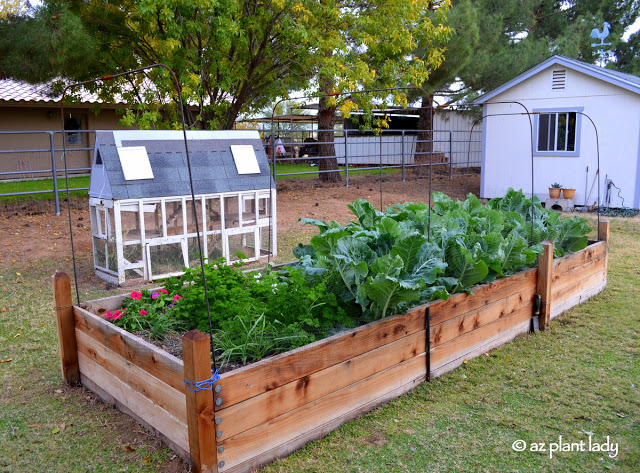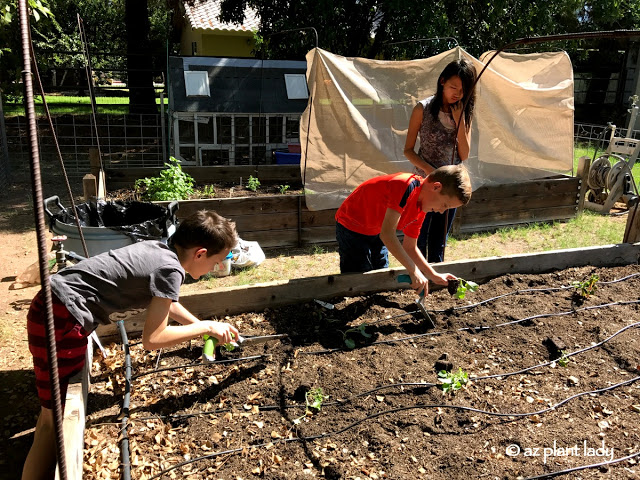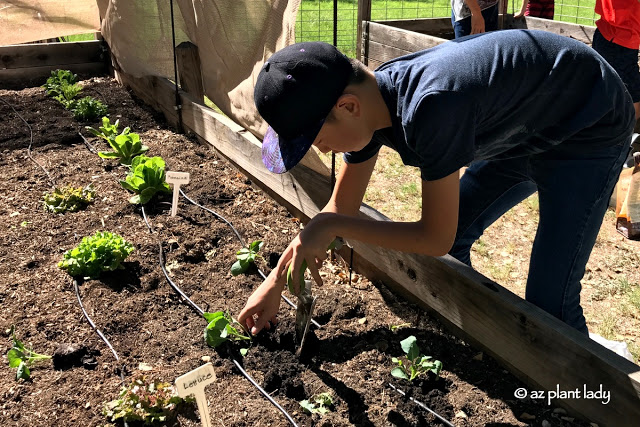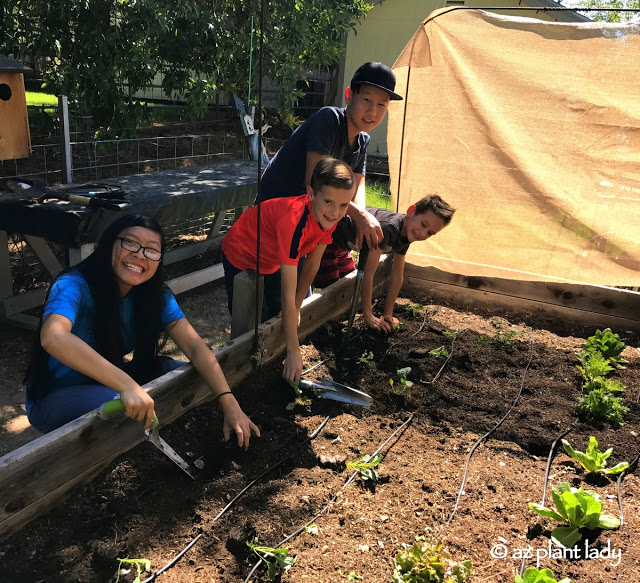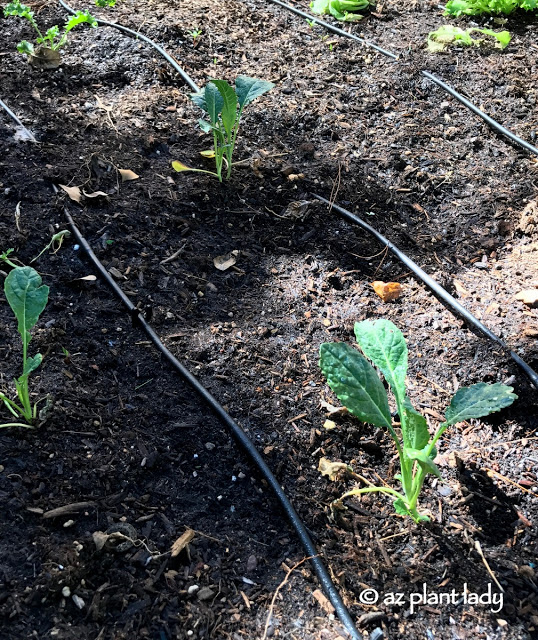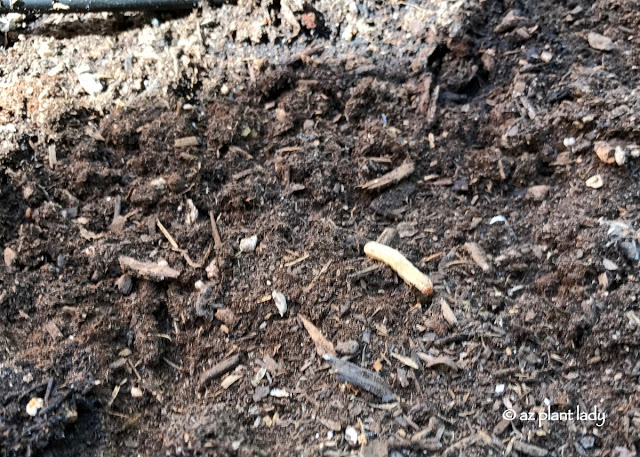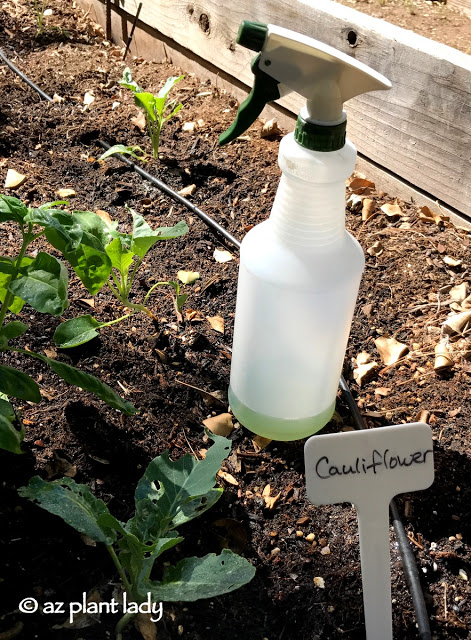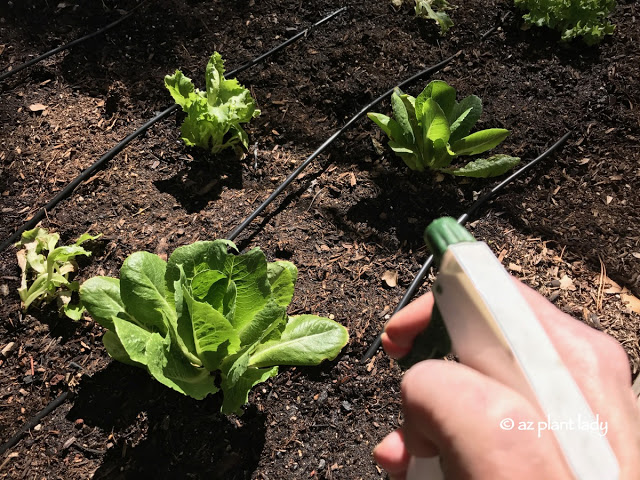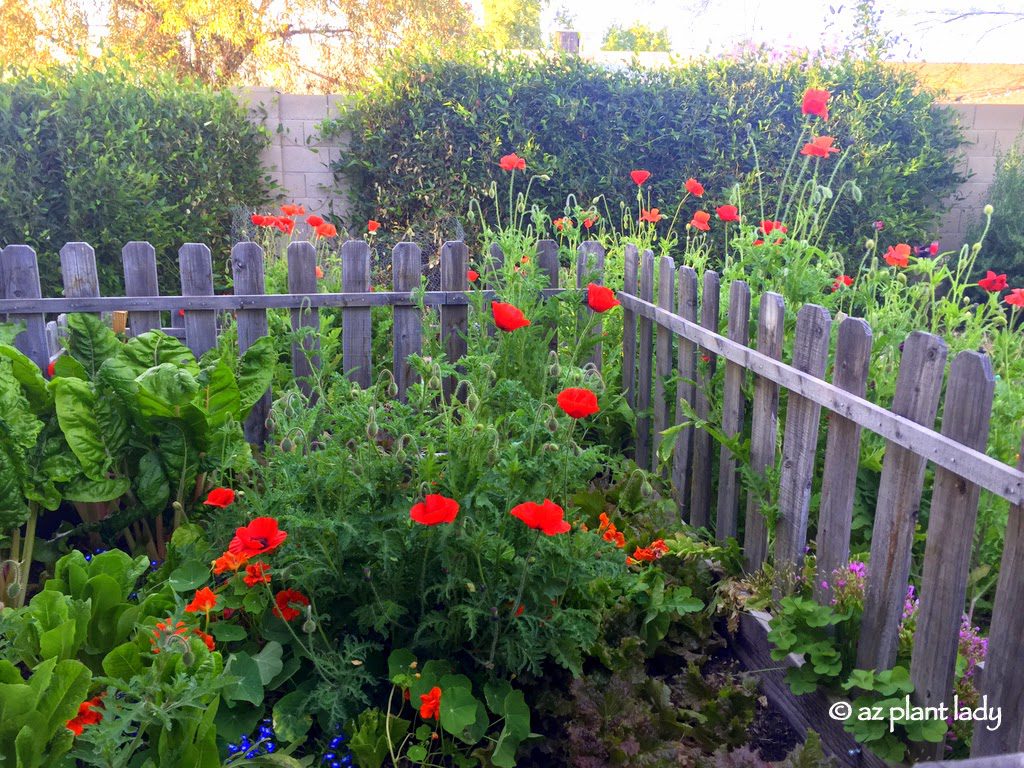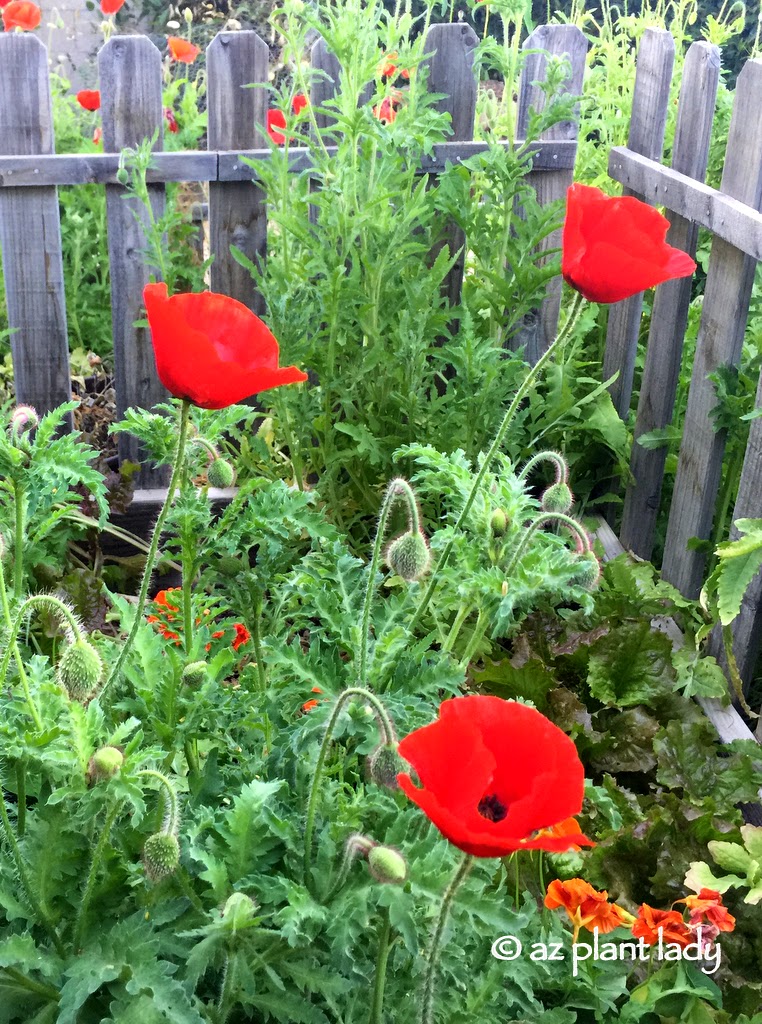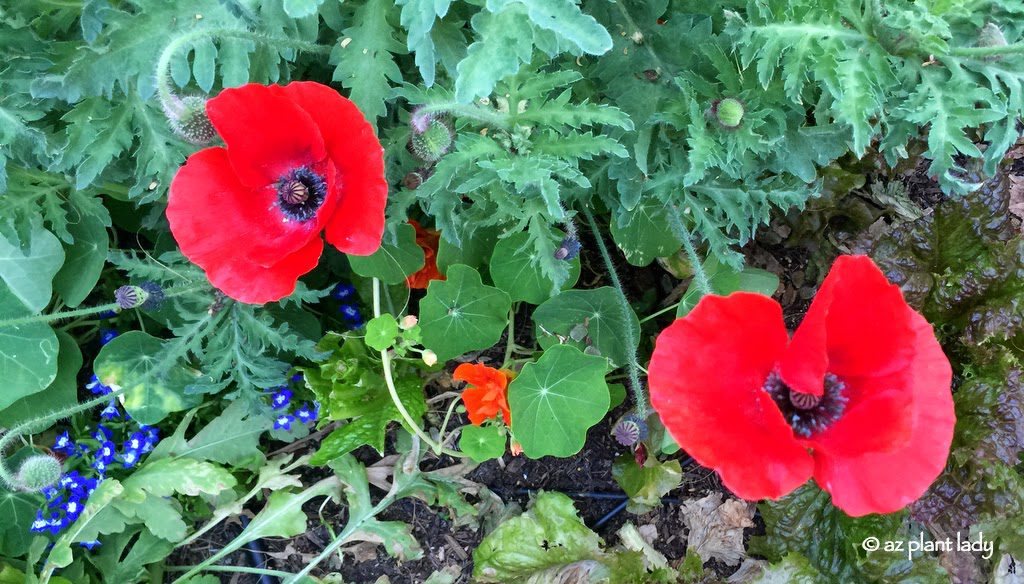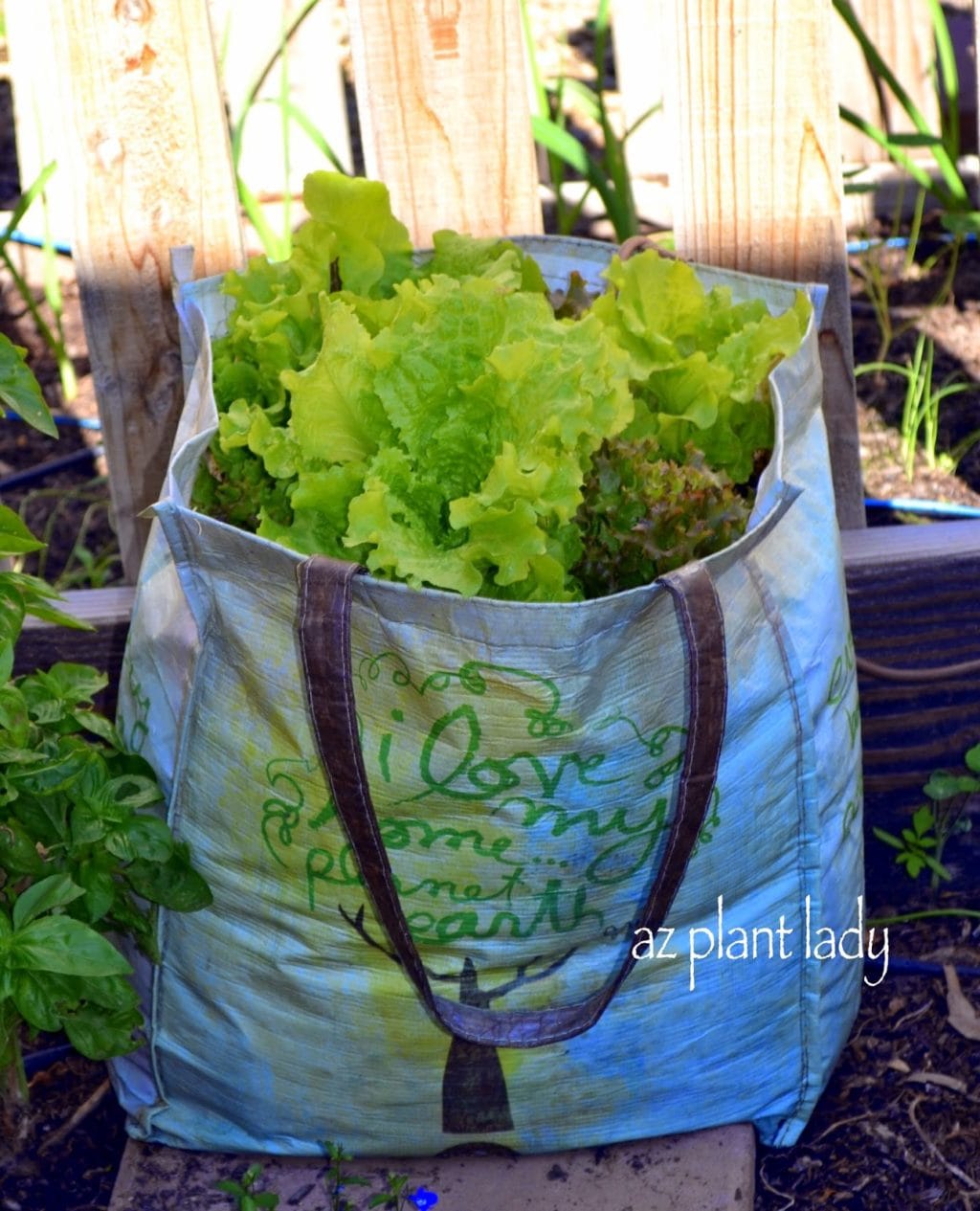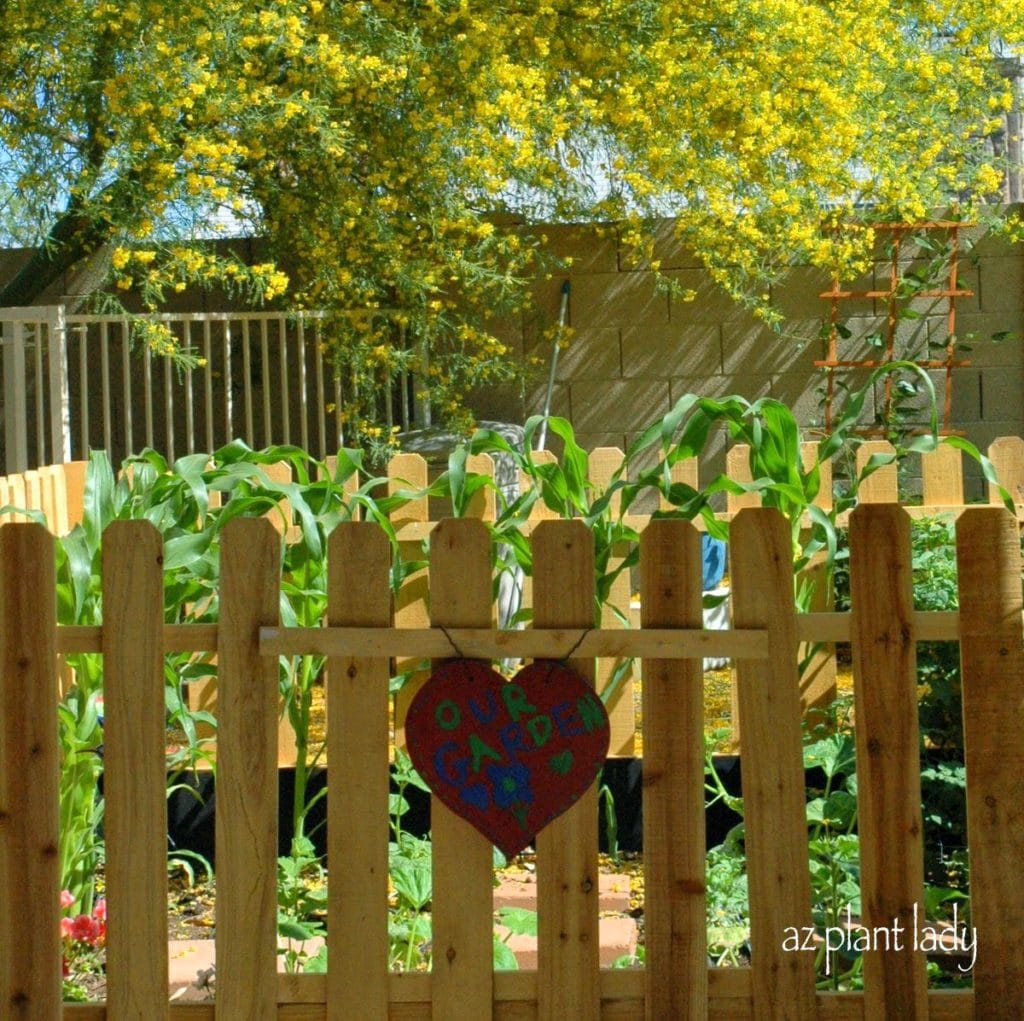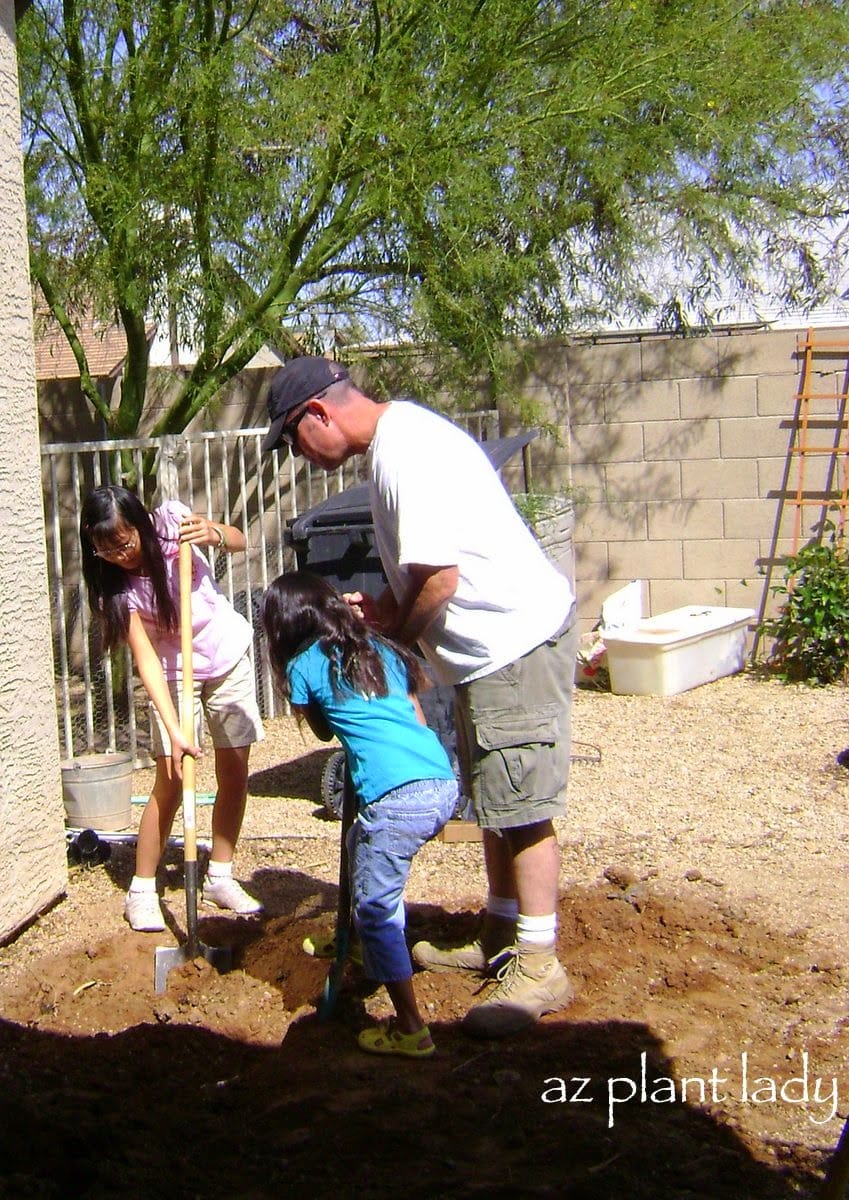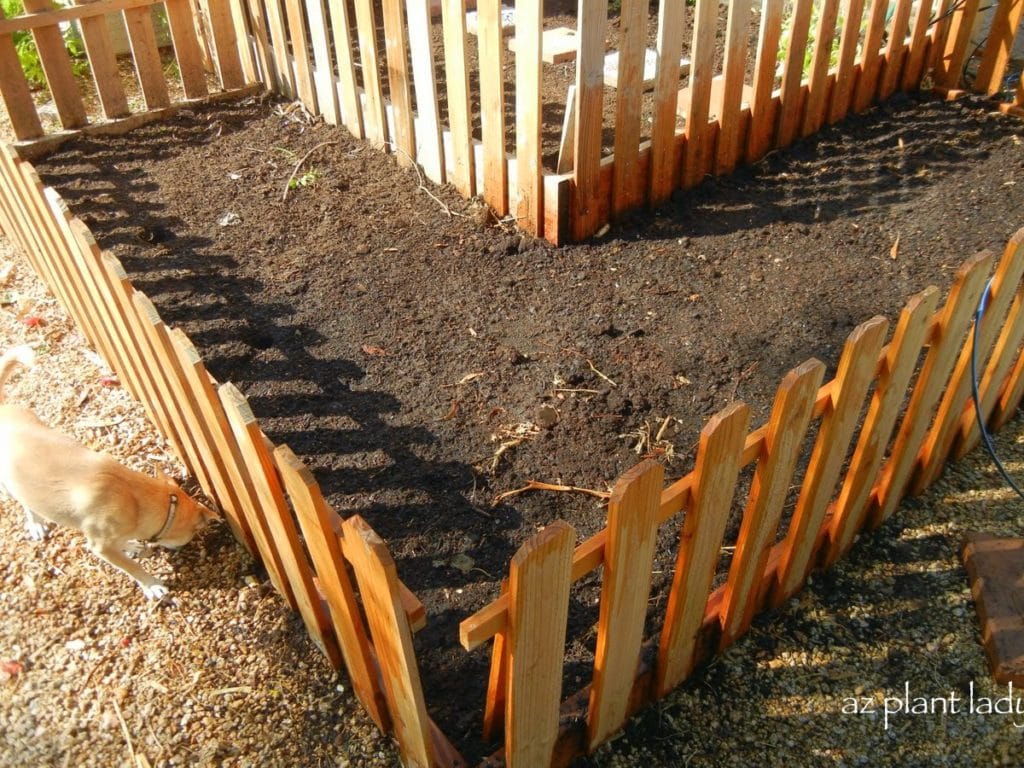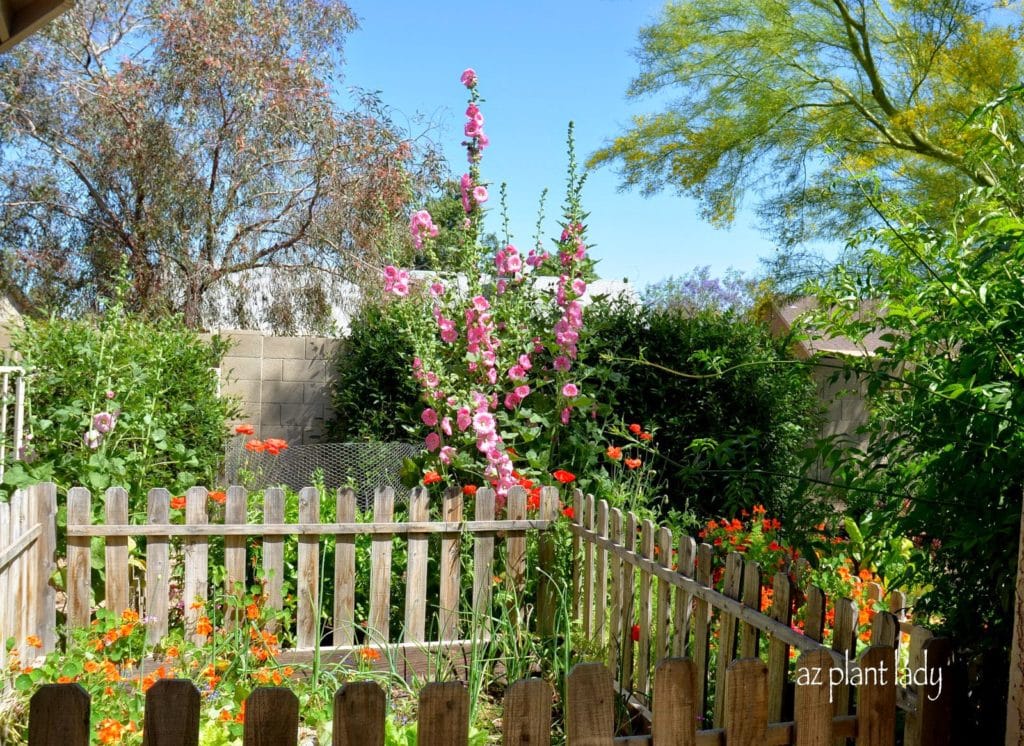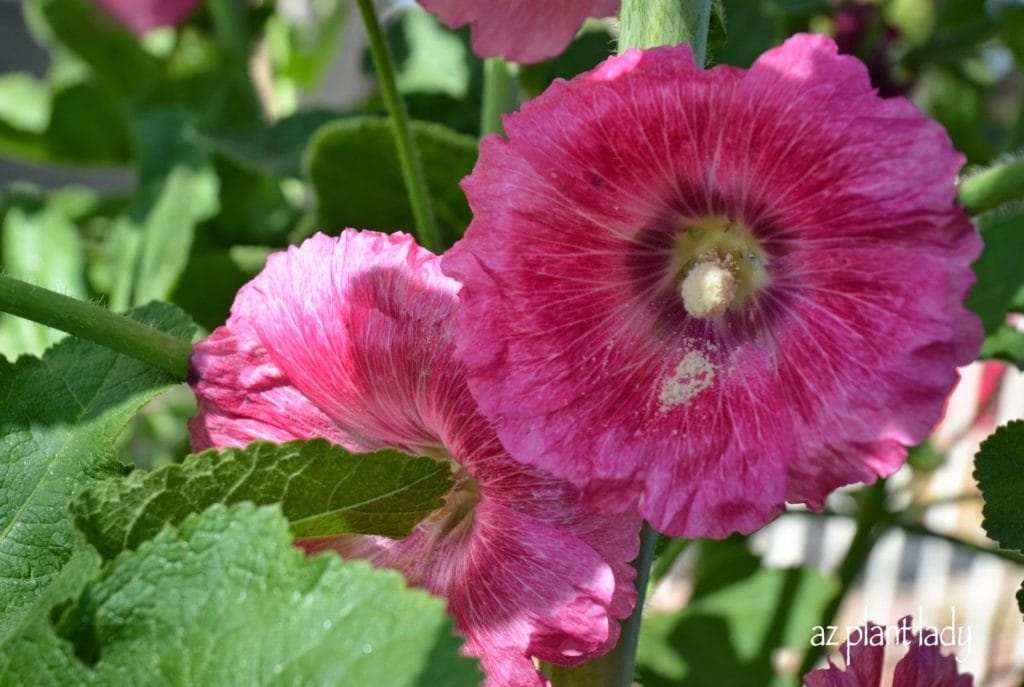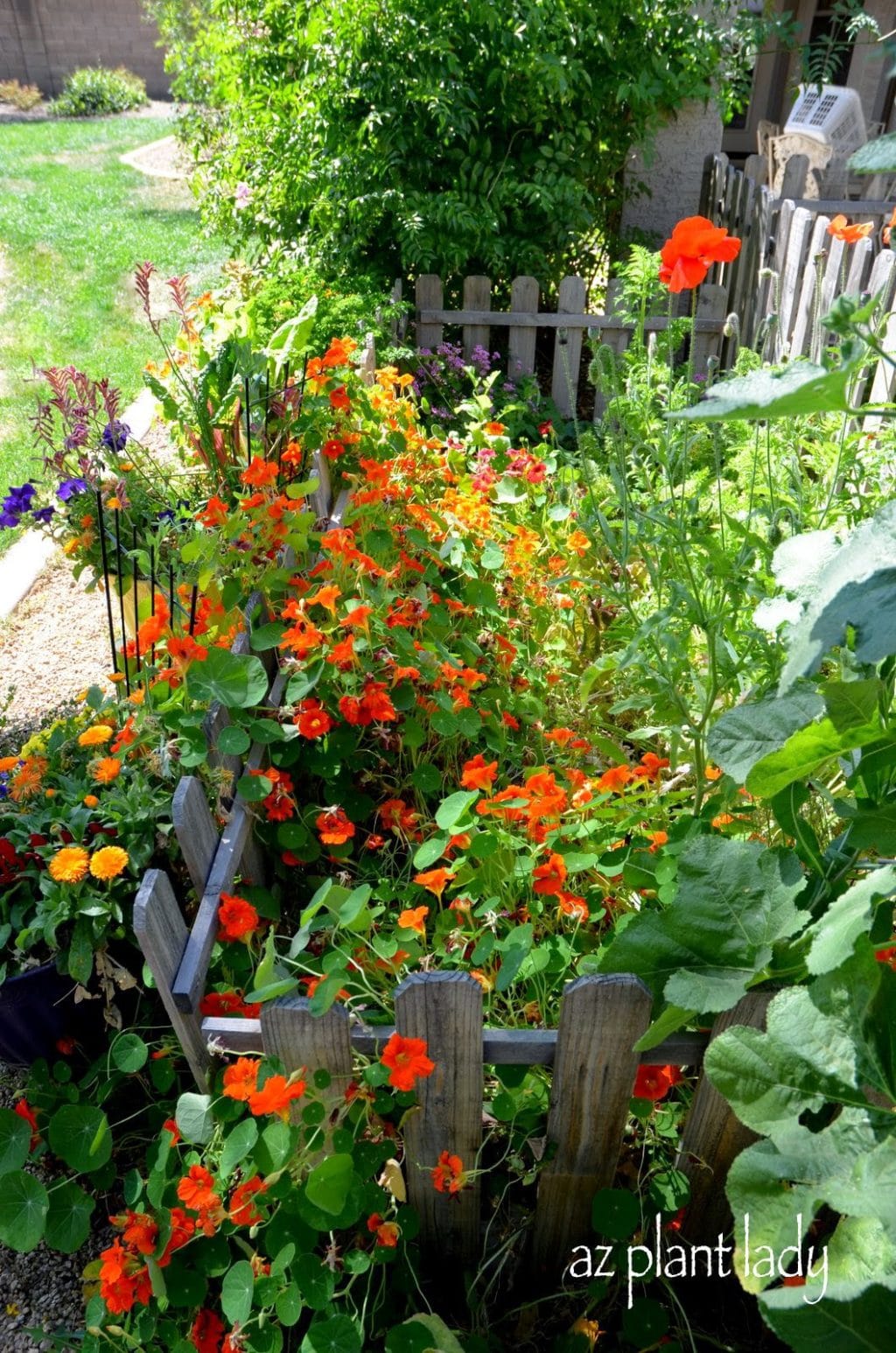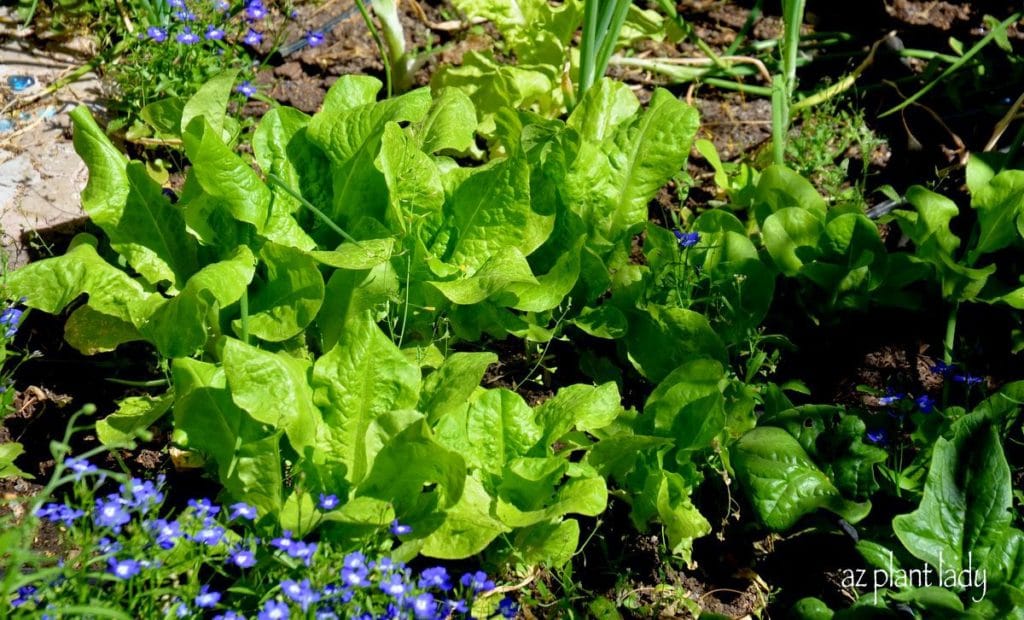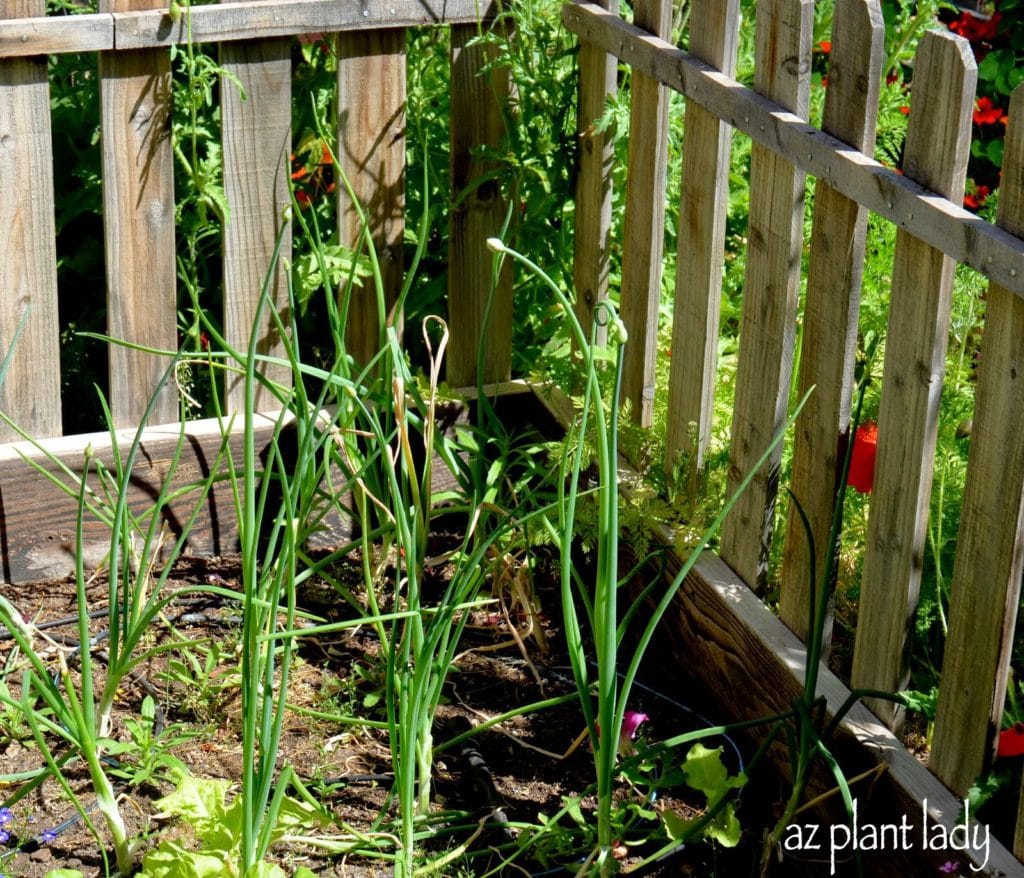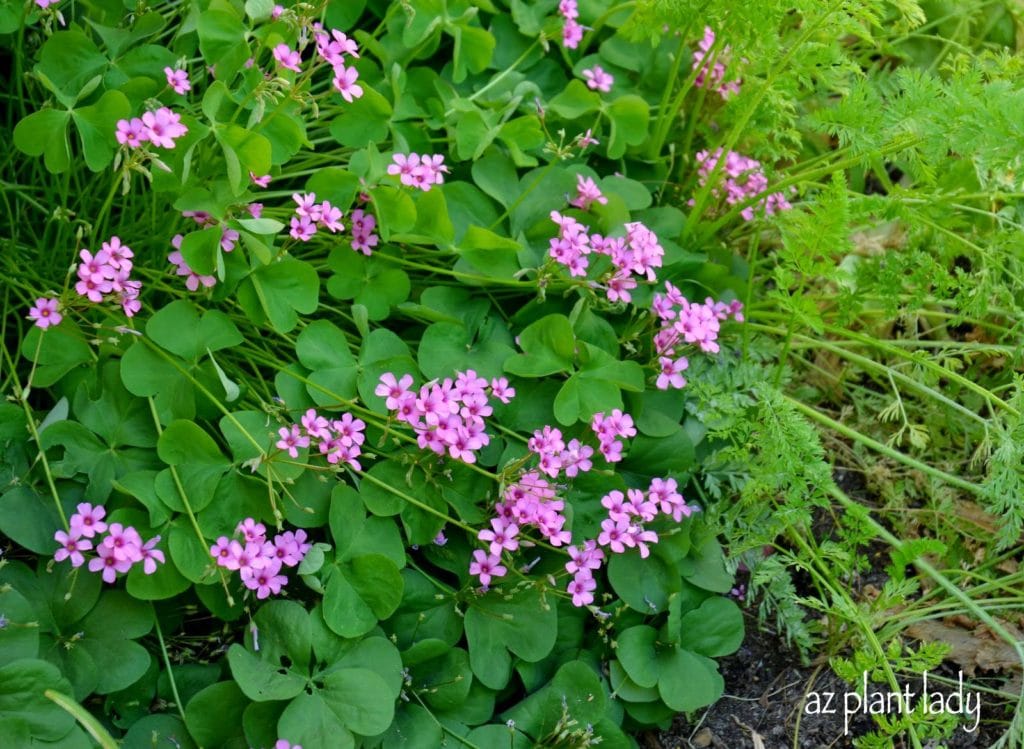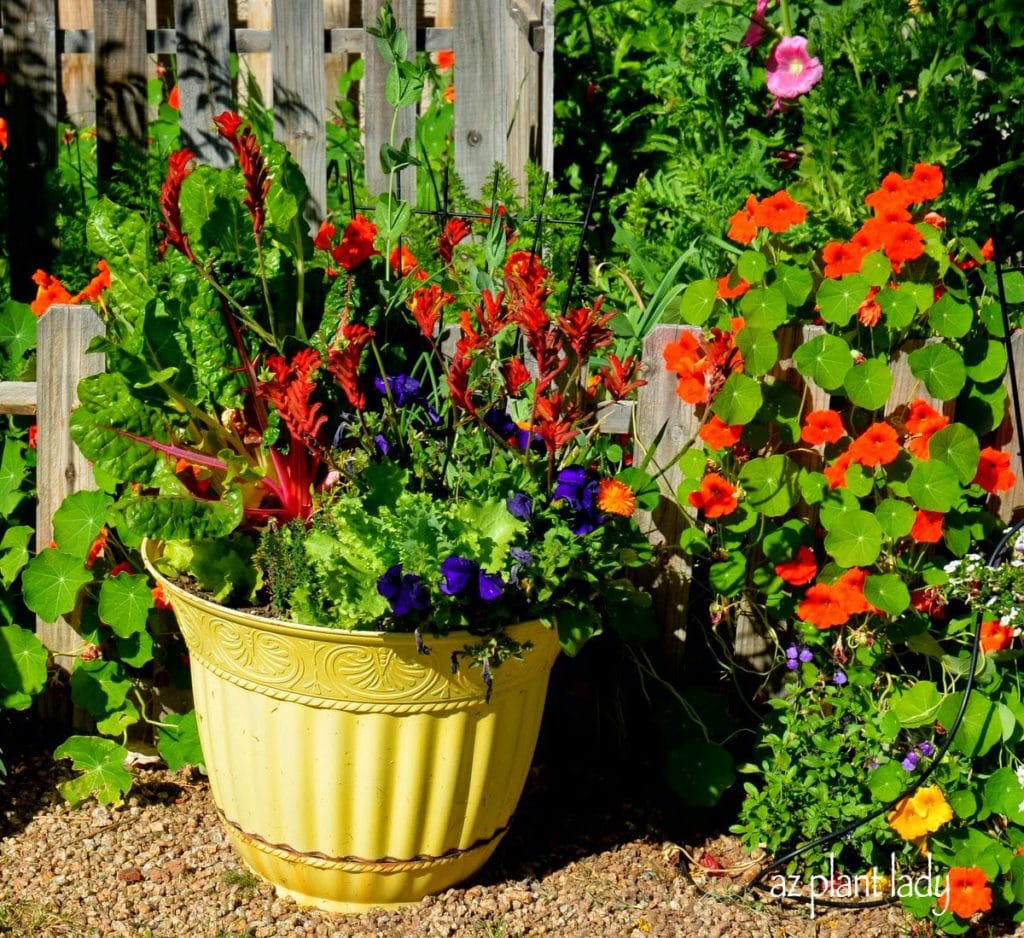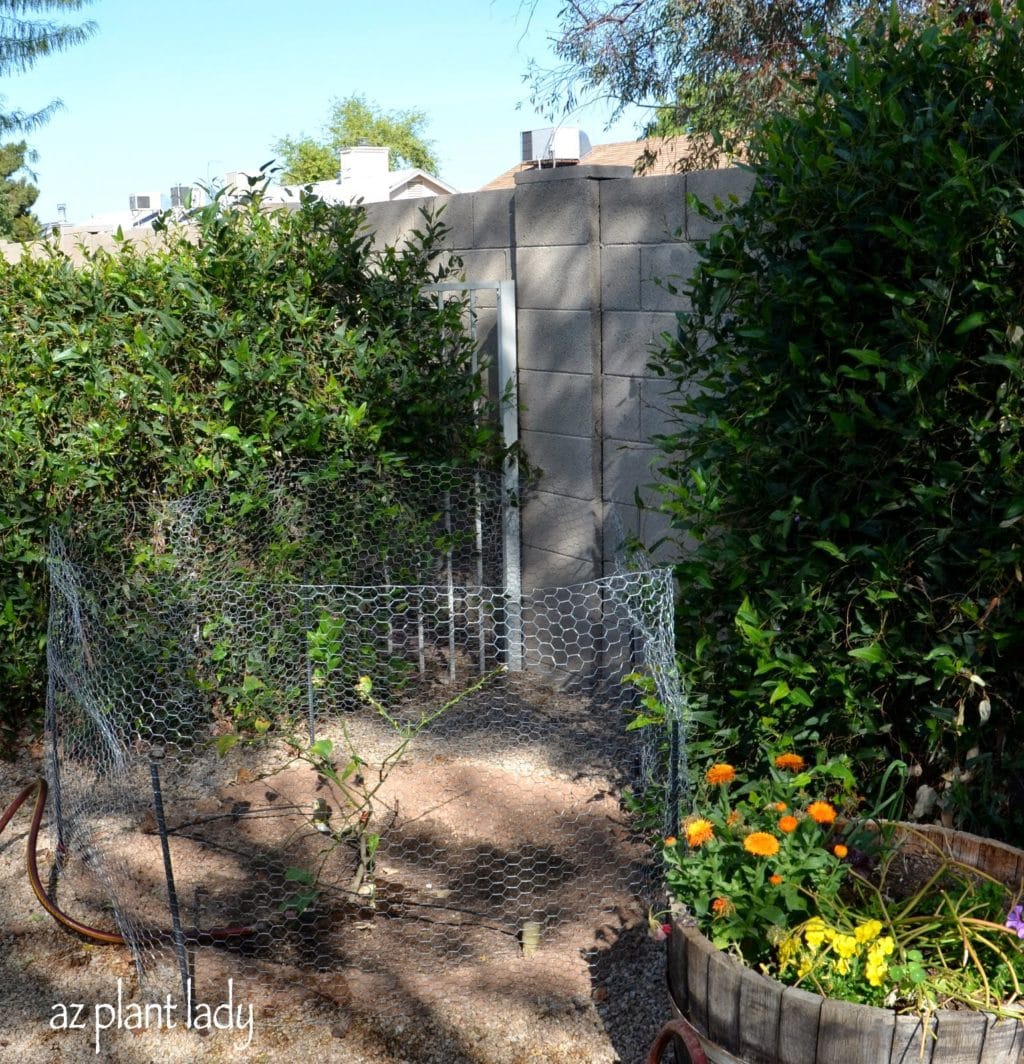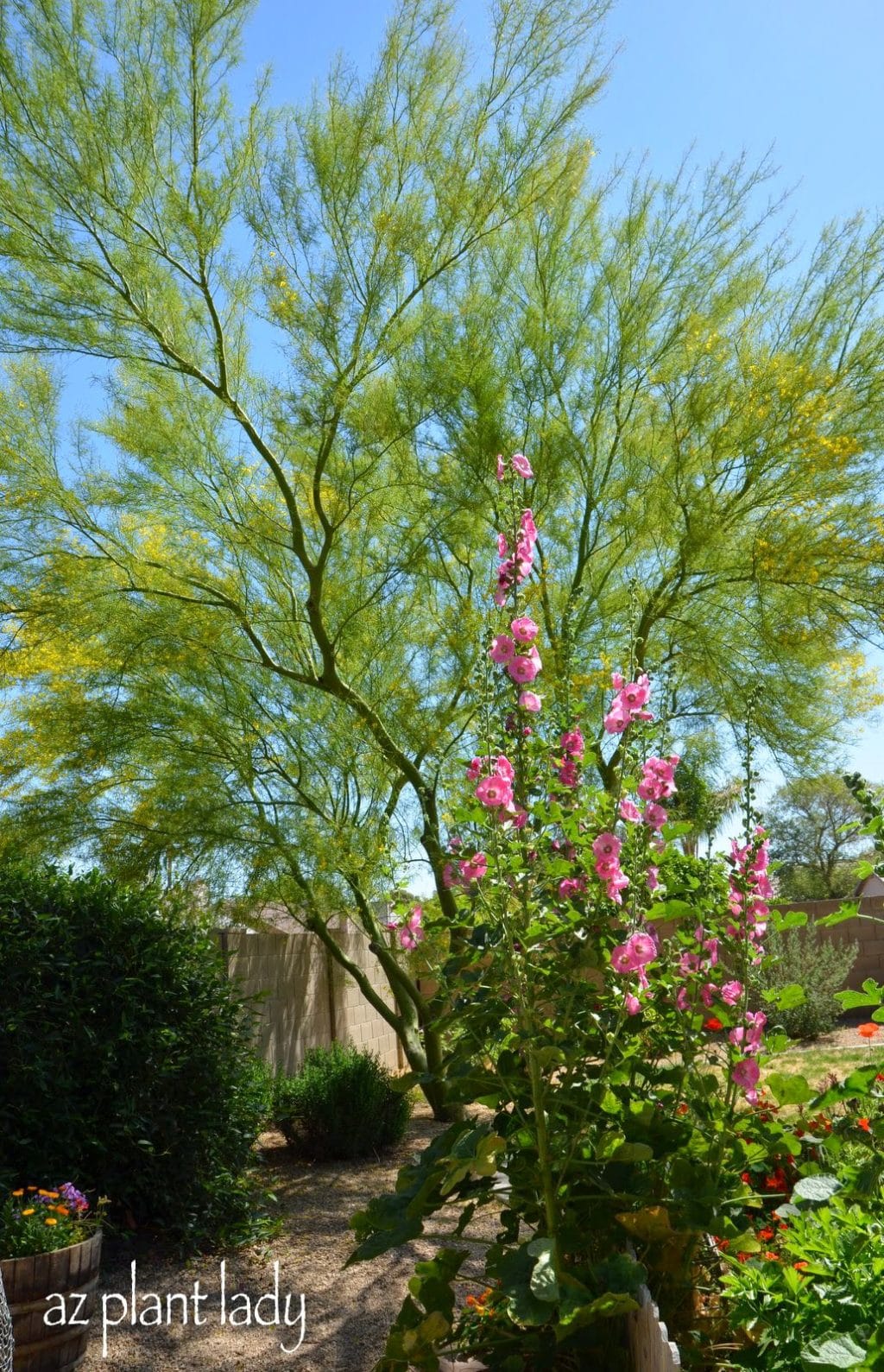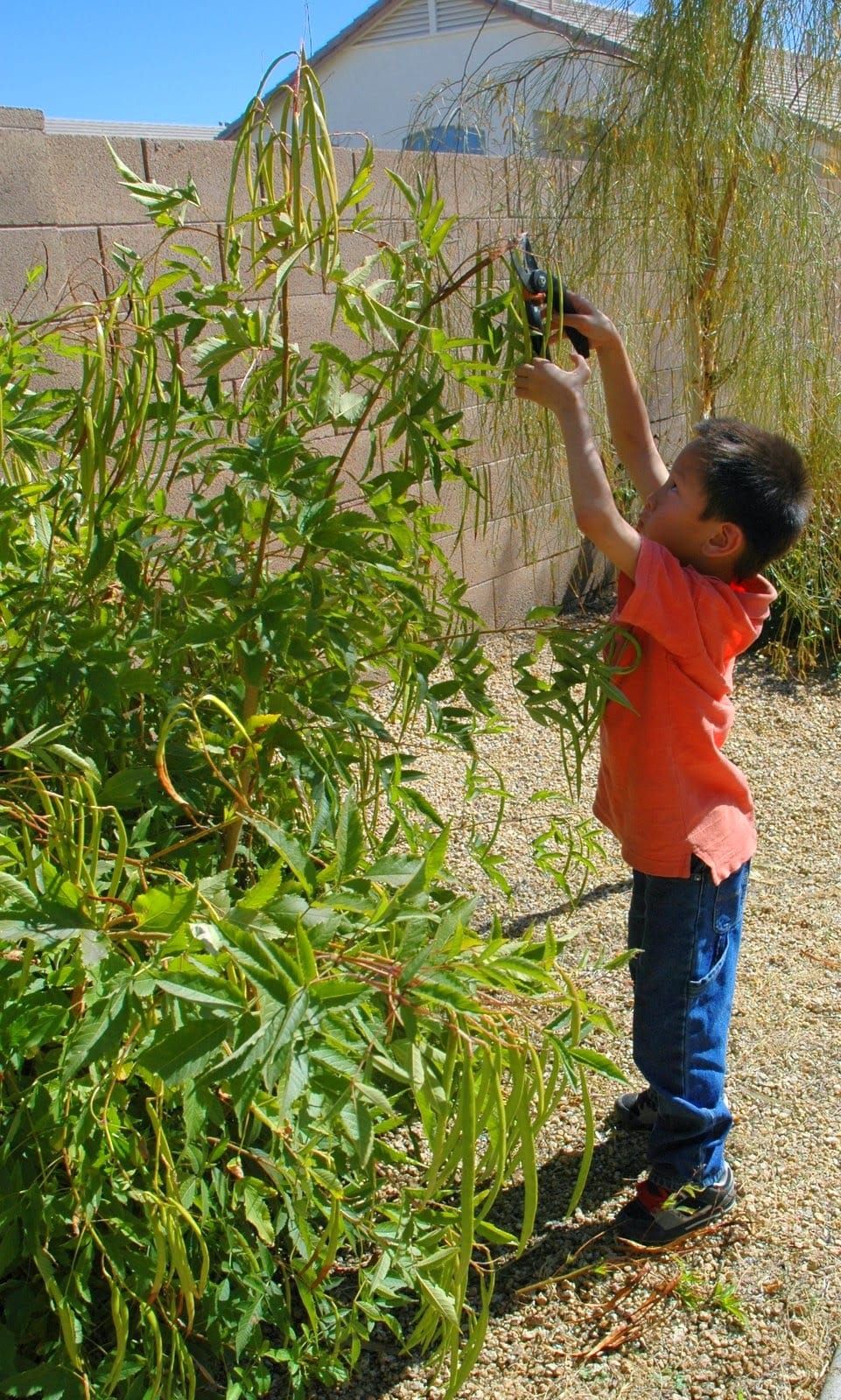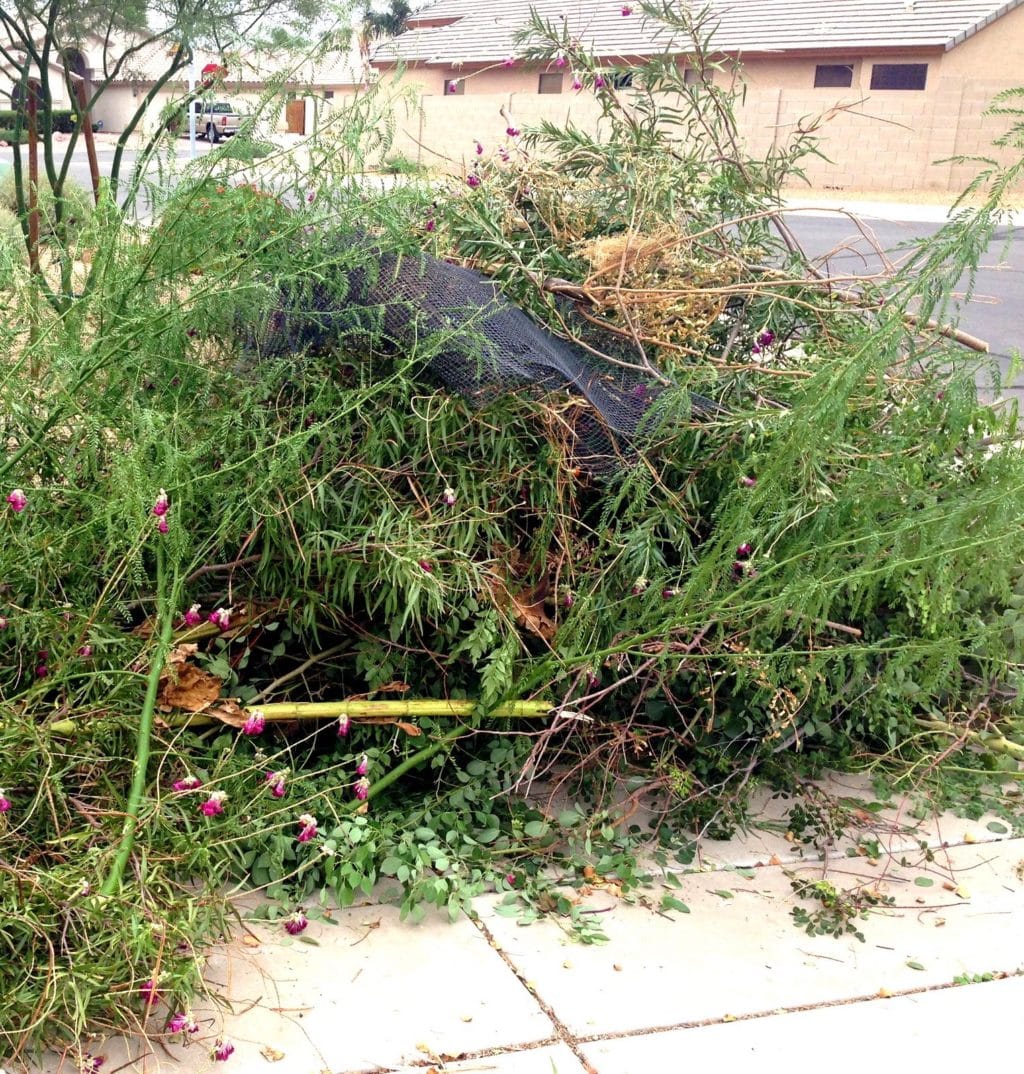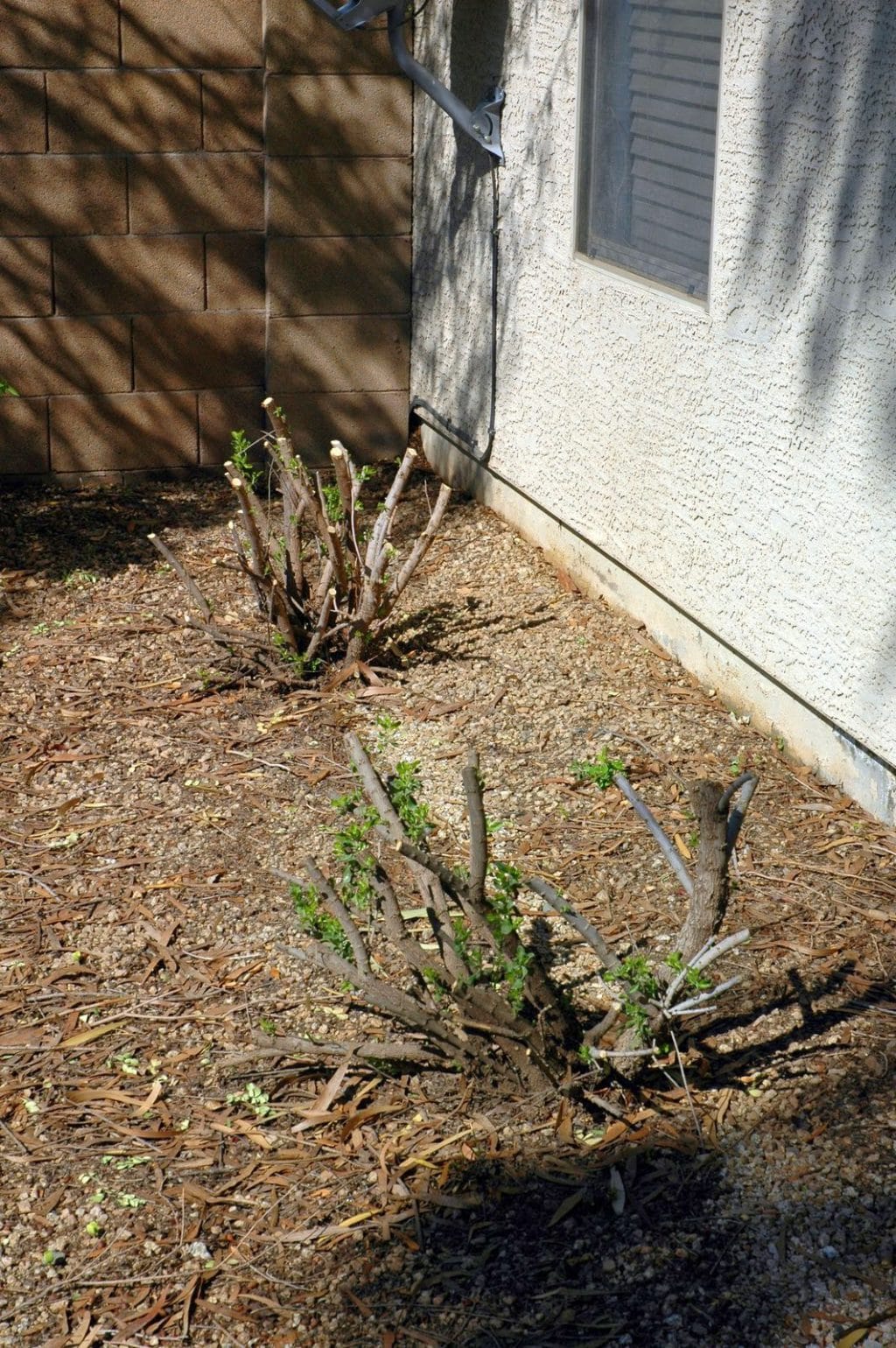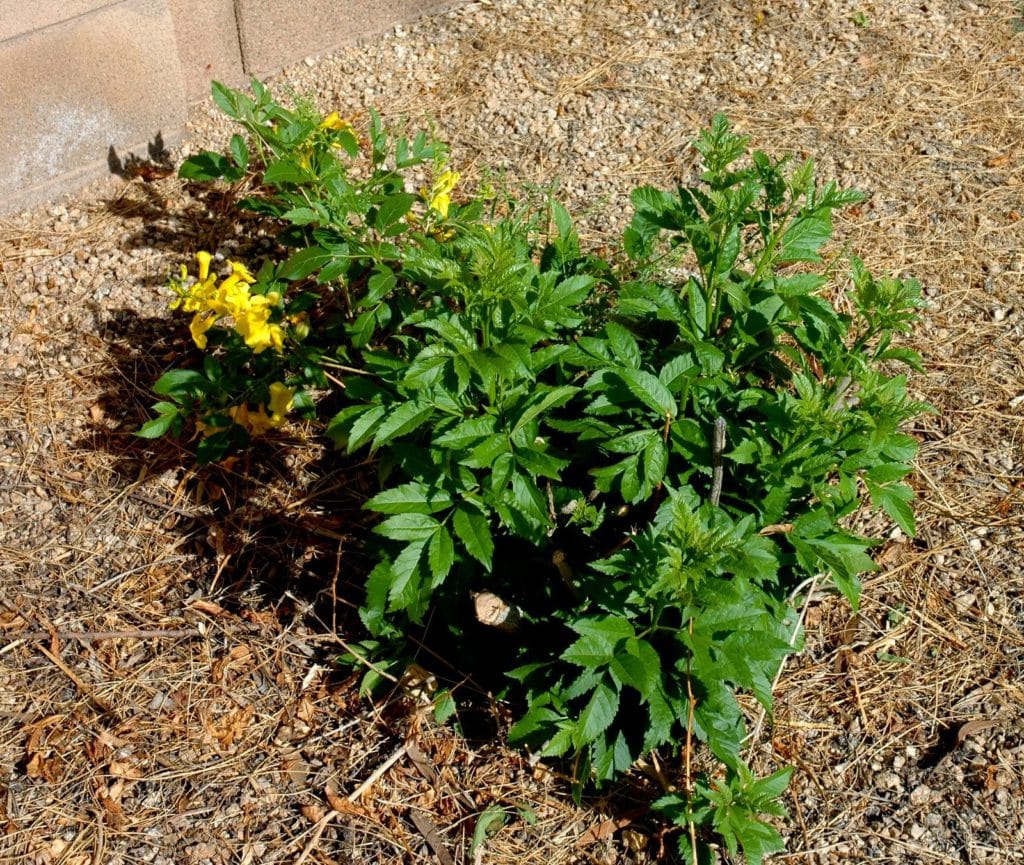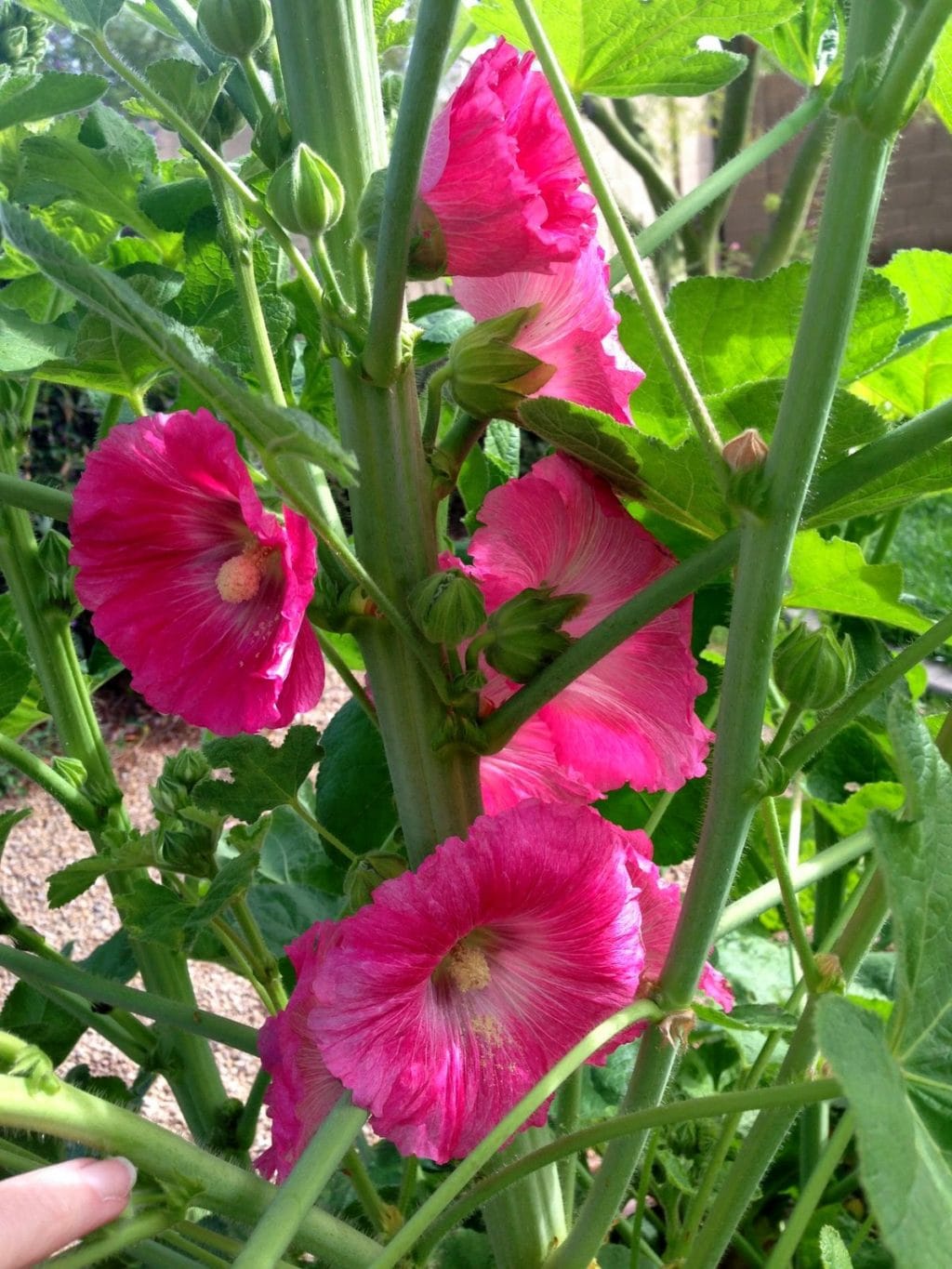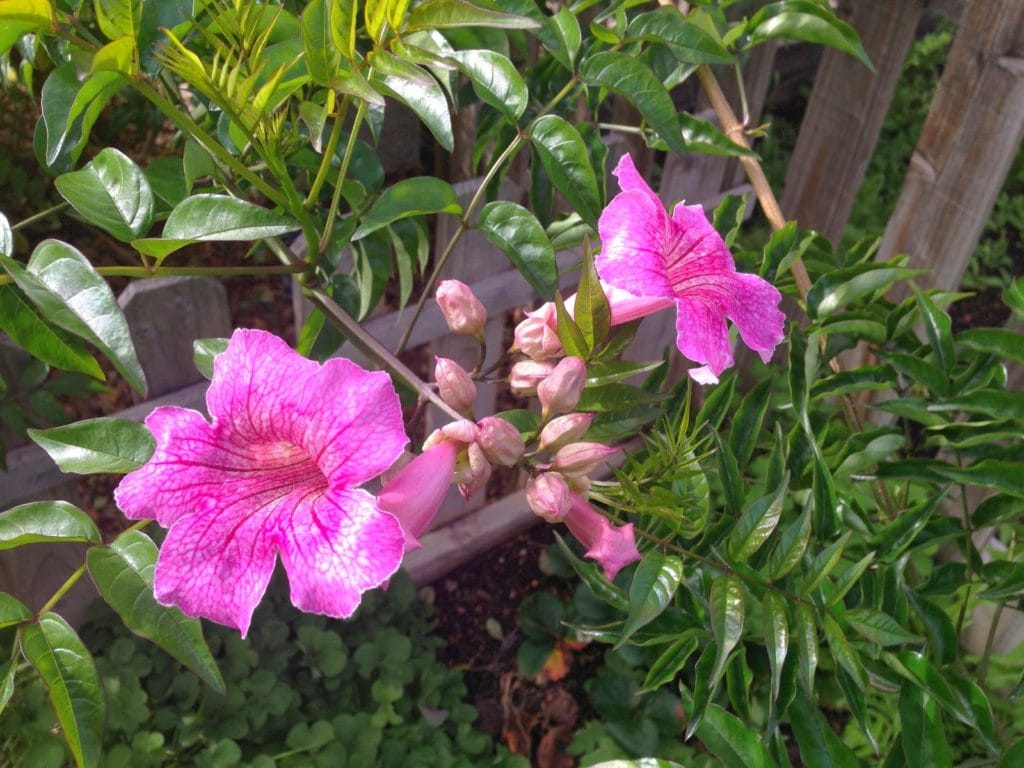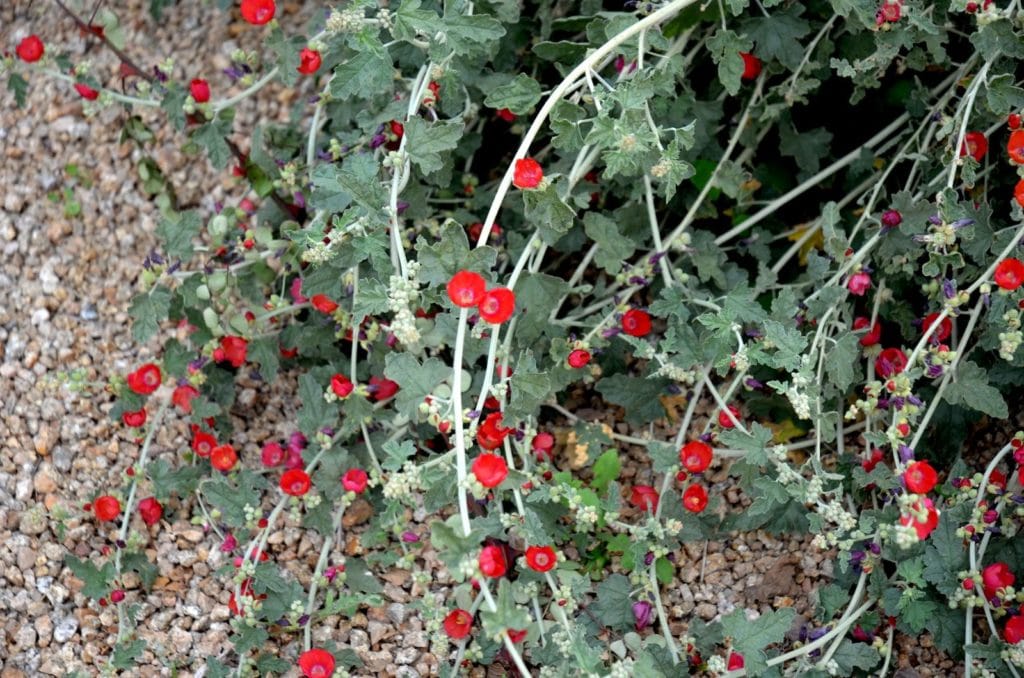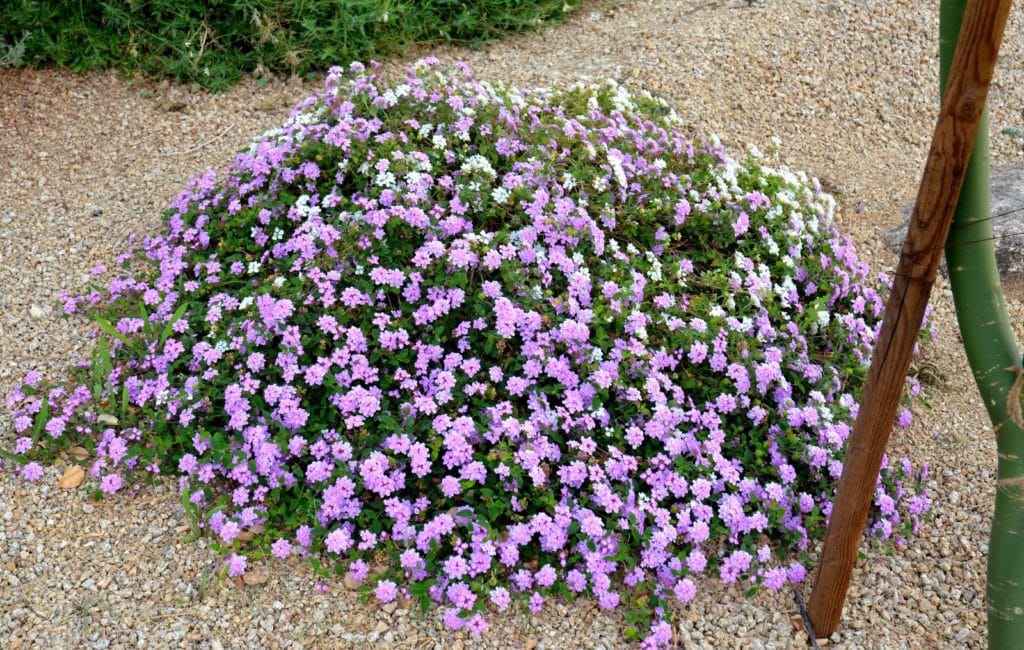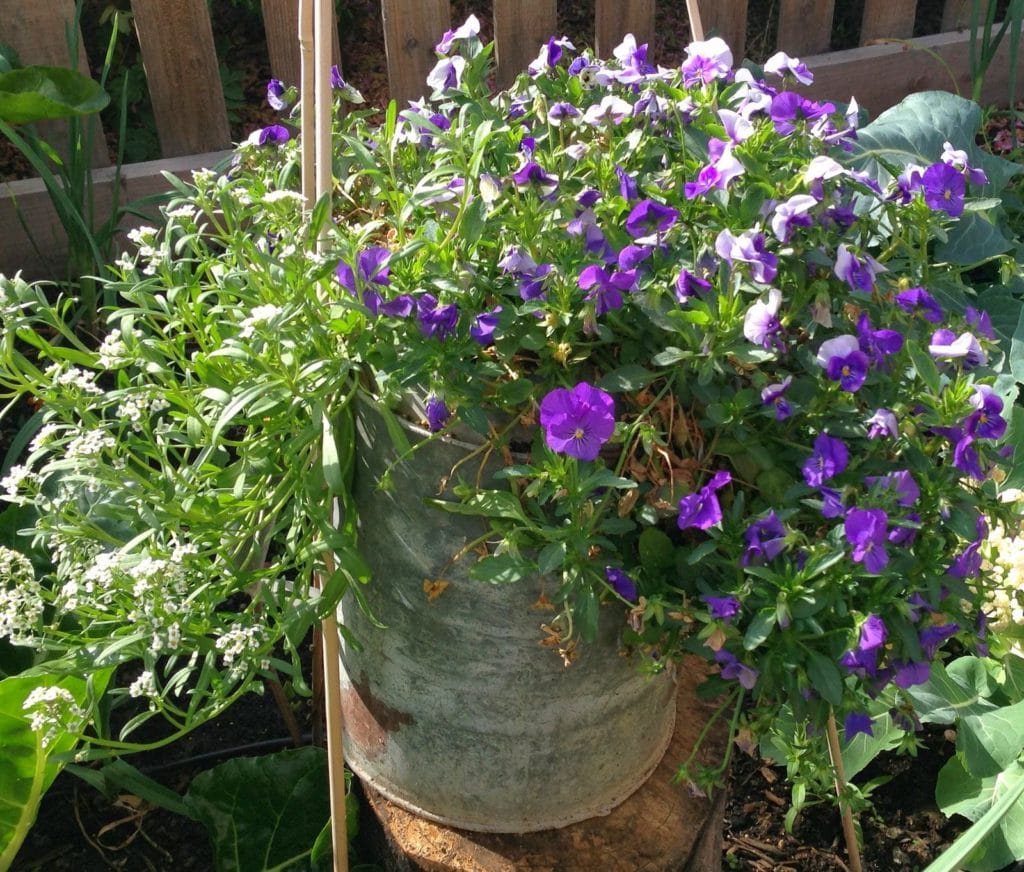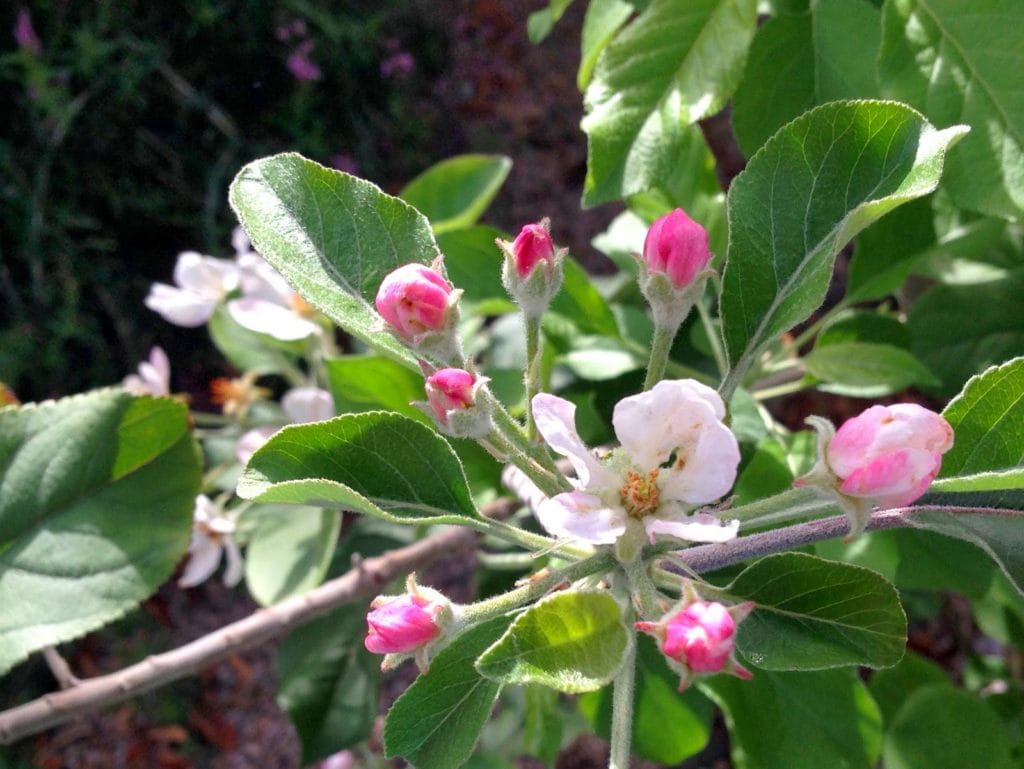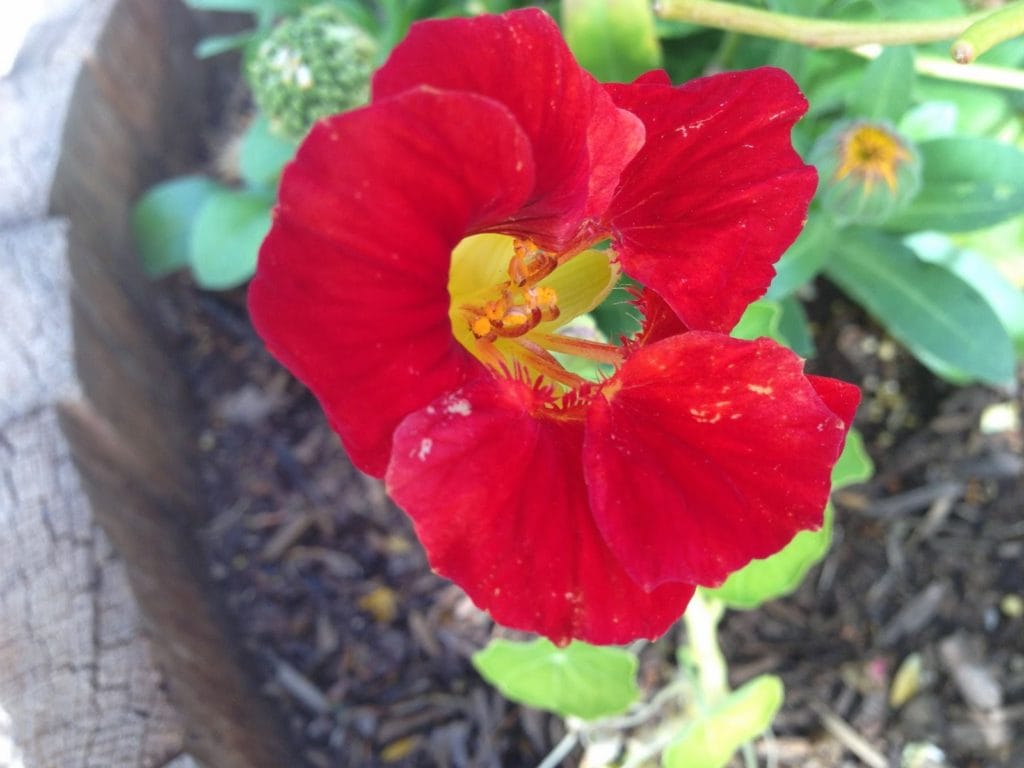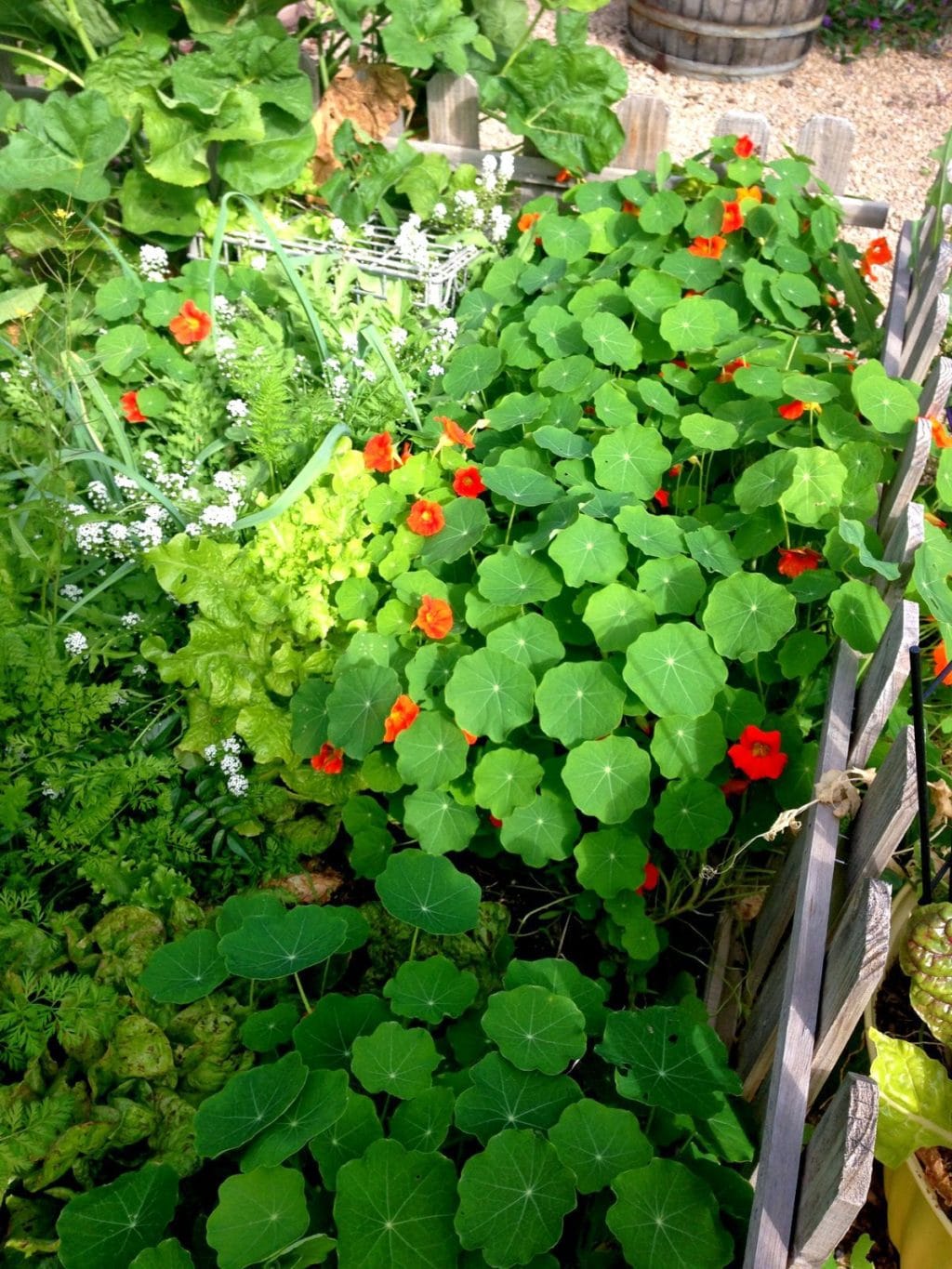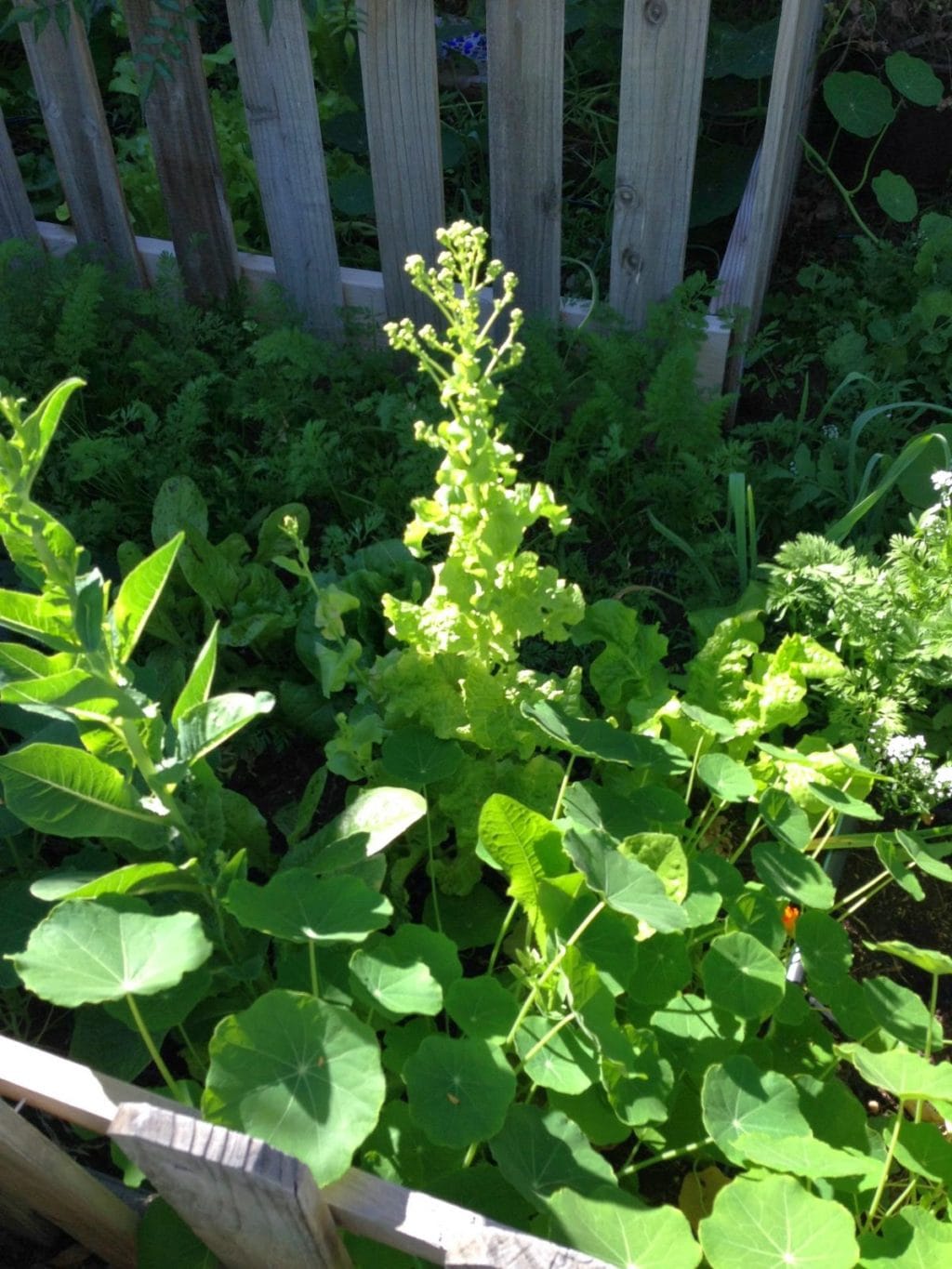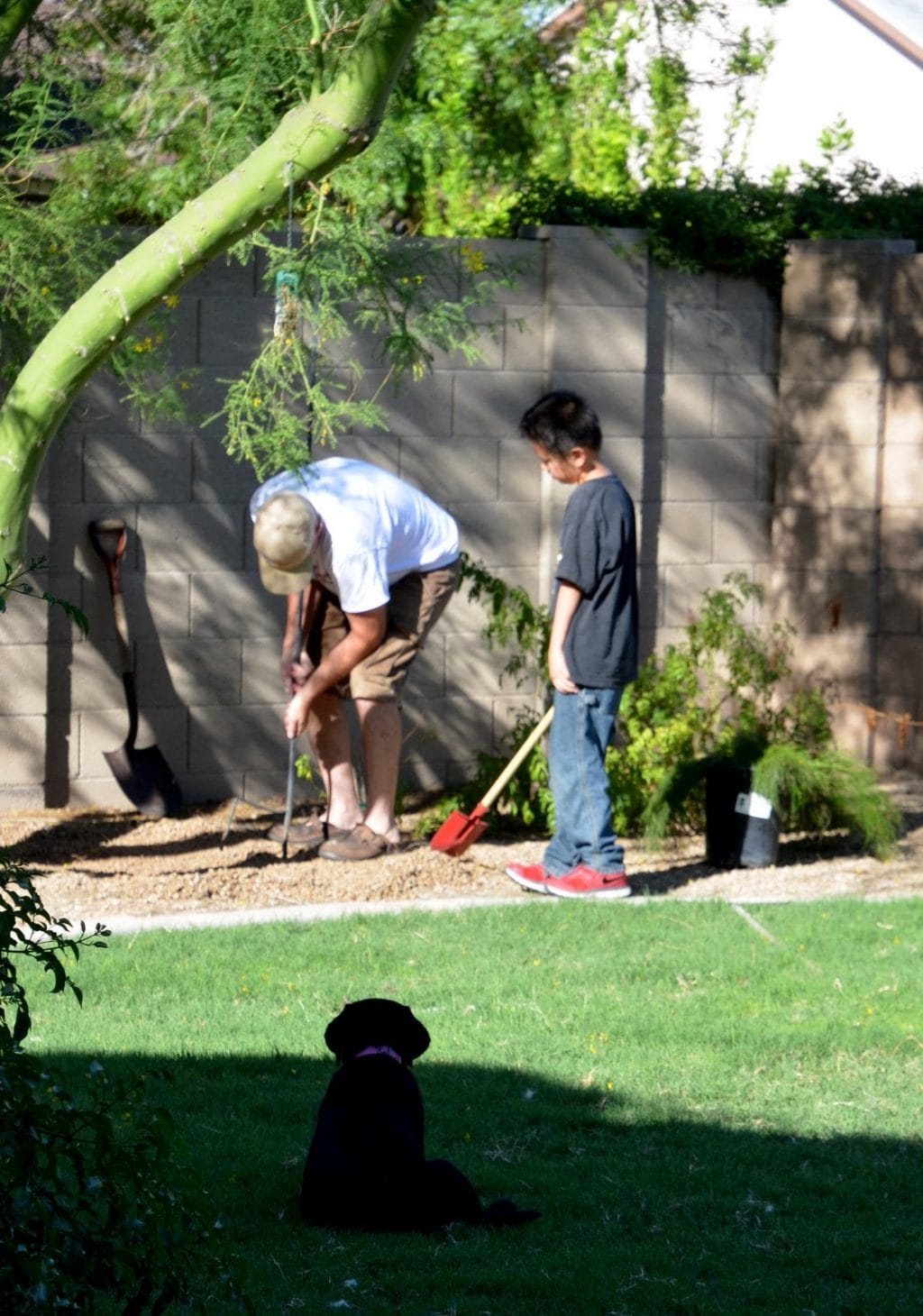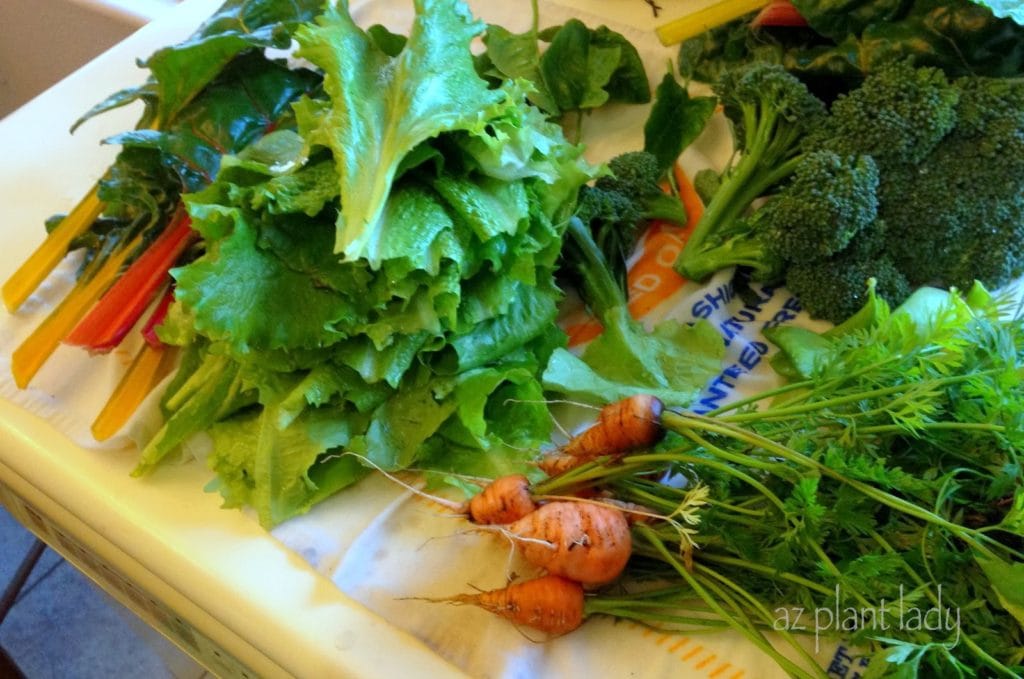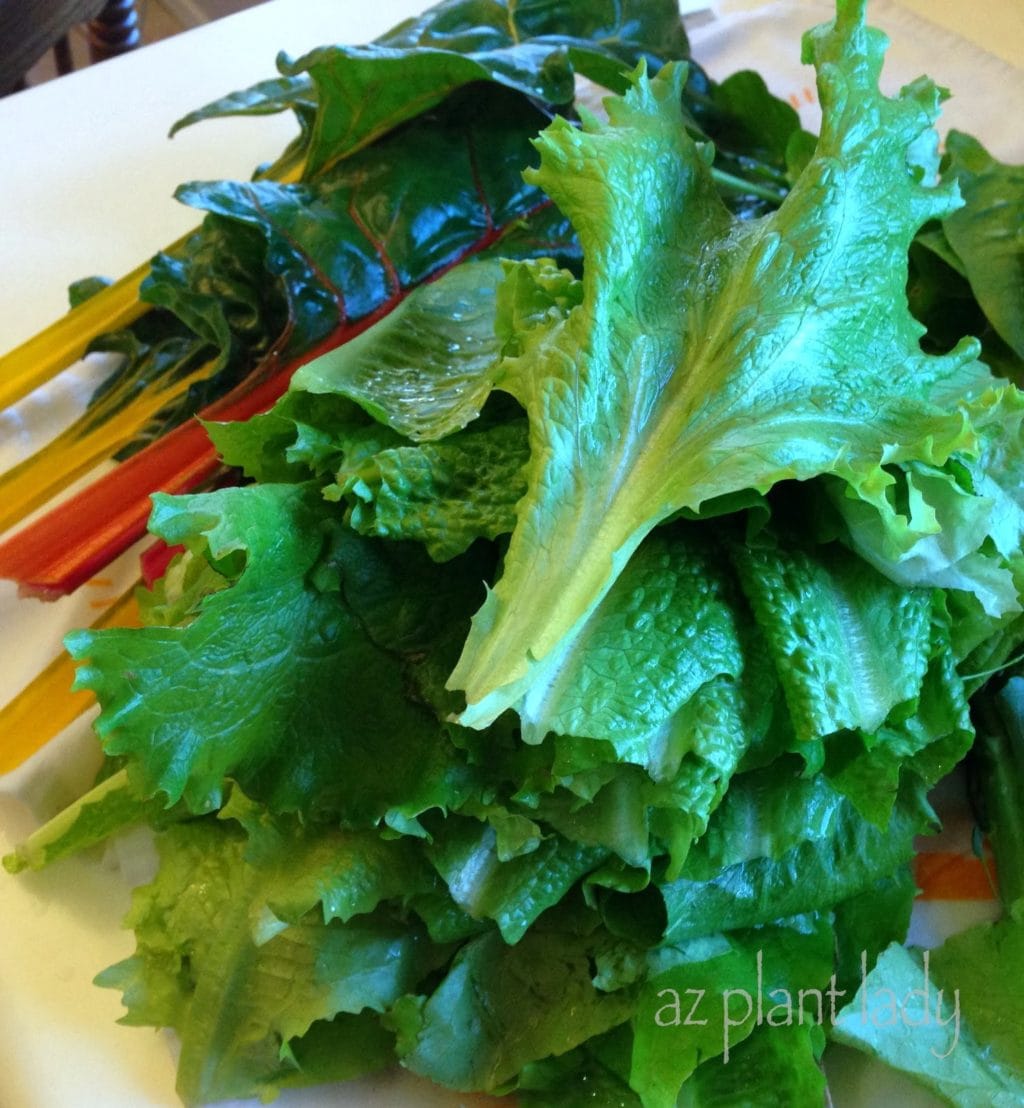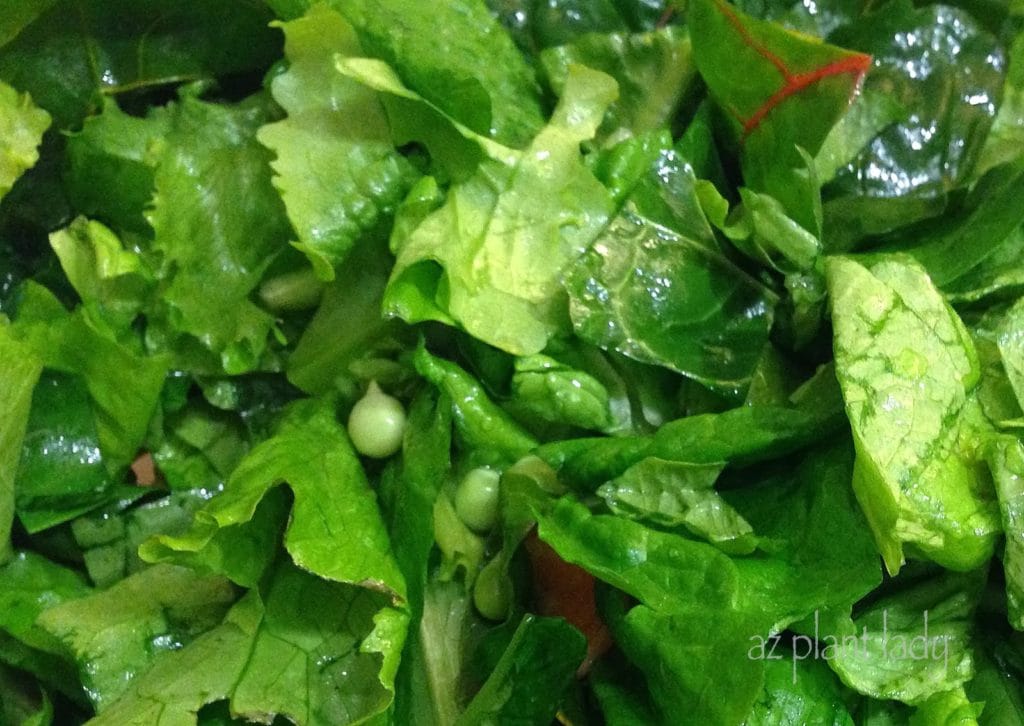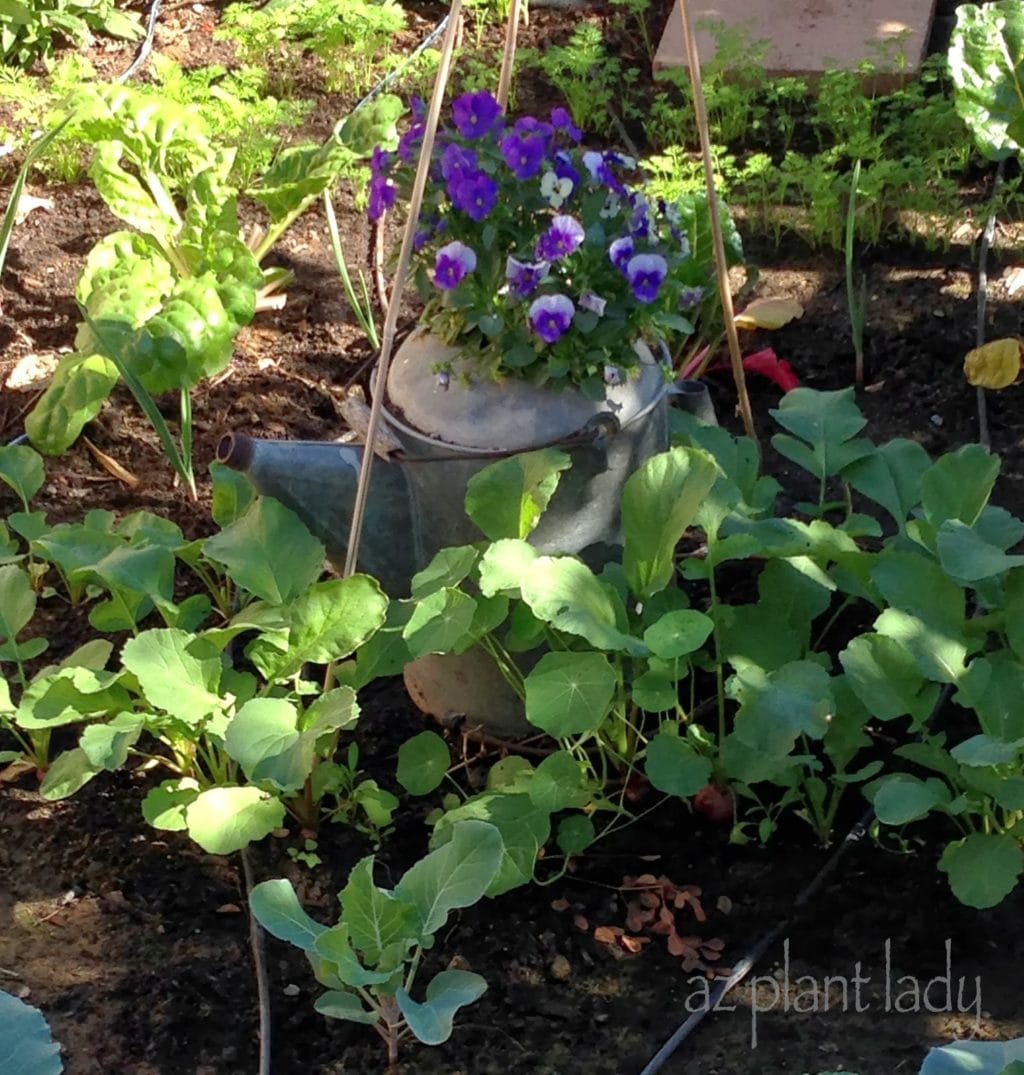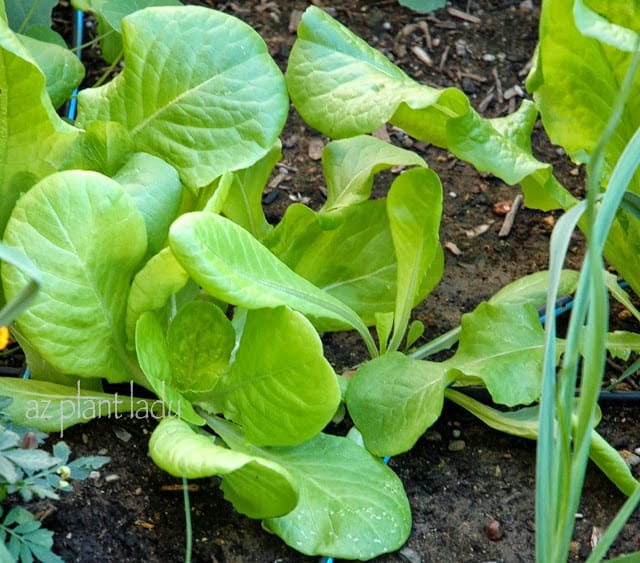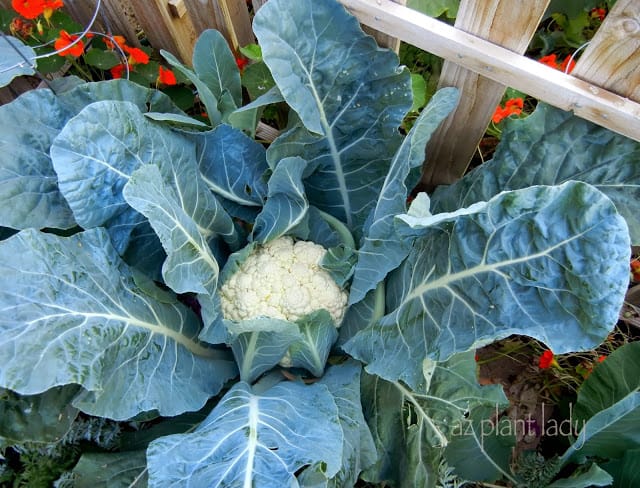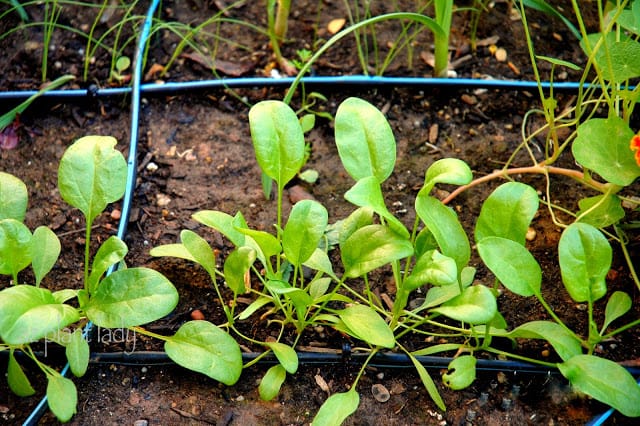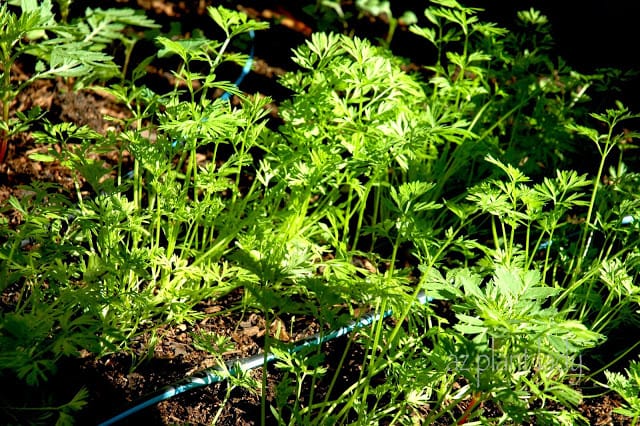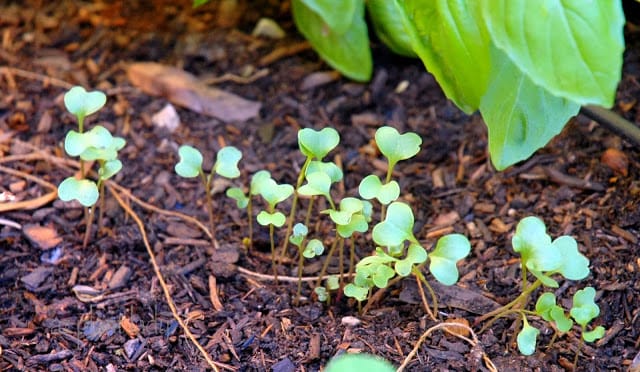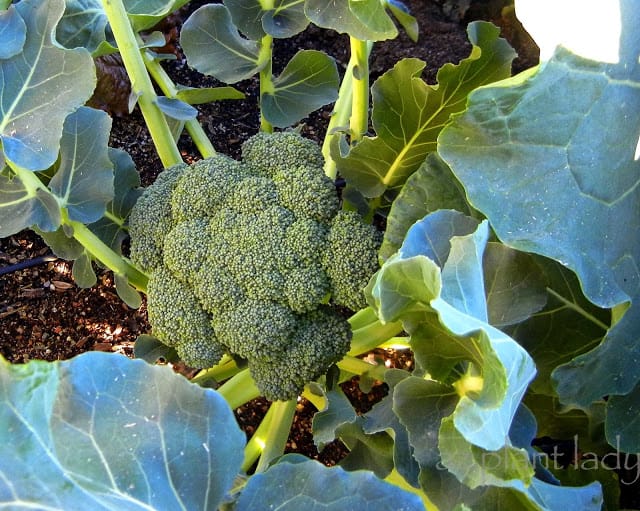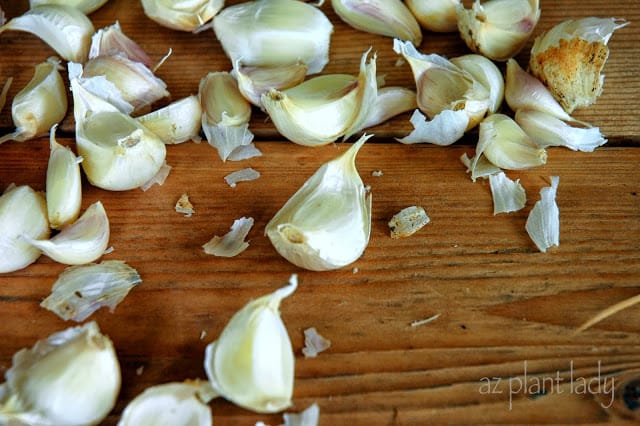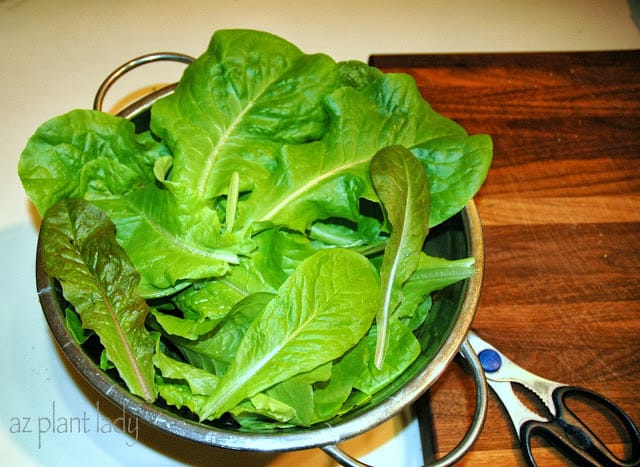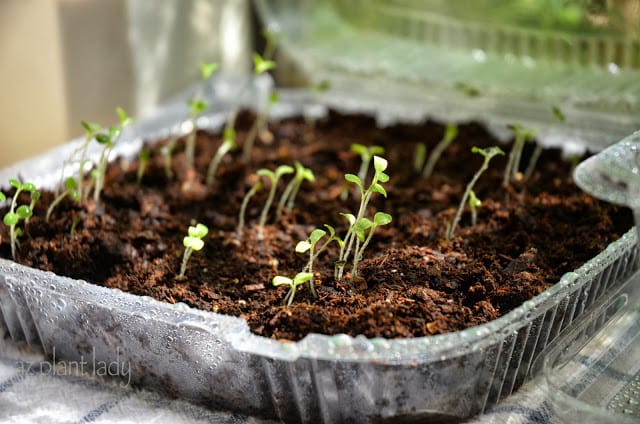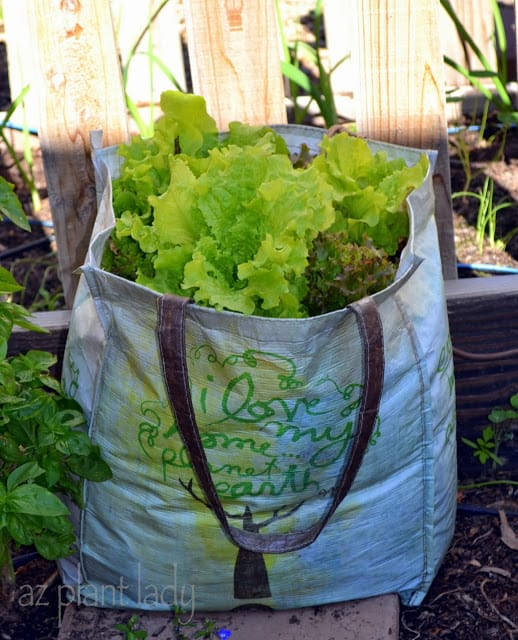UPDATE: This blog post originally was published six-years-ago, and I still like to grow vegetables in pots. It’s hard to believe that my garden helper is now 16 years old and driving a car!
I hope you enjoy it!
I started growing vegetables in pots earlier this year, and it was so easy and the vegetables so delicious AND attractive that I had to do it again.
Last week, my mother took my youngest kids to the nursery and picked up some plants for me.
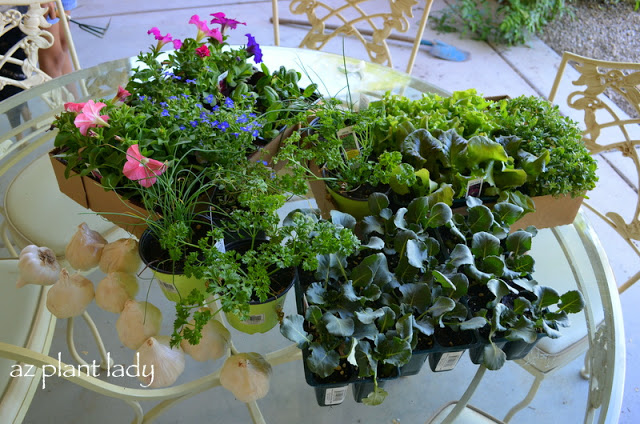
You know what? This is one of the happiest sights in my world 😉
My son, Kai was anxious to pull out the existing plants from our pots.
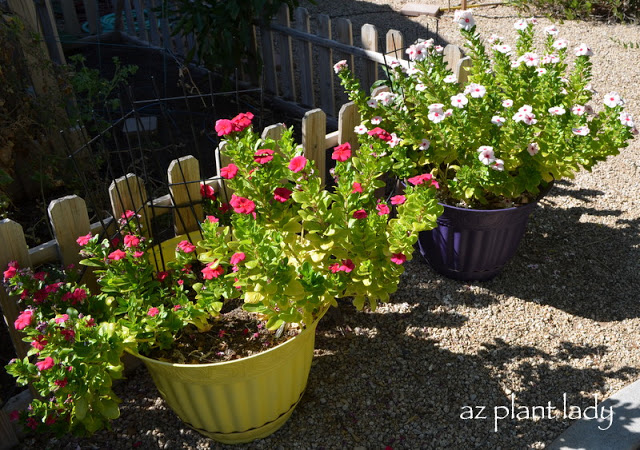
All my summer vegetables had been pulled a while ago, and all that was left was the Vinca that I had planted. I realize the vinca looks a bit yellow and I admit that I didn’t fertilize them enough (I kind of hibernated inside this summer.
Kai got to work at pulling out the flowers.

He used the hand shovel to loosen the roots so he could pull out the vinca.

Then he used the shovel to ‘bang’ the root ball to loosen the soil back into the pot. You don’t want to ‘throw away’ good soil by leaving it around the roots of plants you are pulling out.

I think Kai did a good job getting all the soil out of the roots, don’t you?
**Vinca will over-winter in my zone 9 garden, but will not flower much. I prefer to treat them as an annual.
Now for the fun part – planting!
I added some more potting mix (not potting soil, which can get soggy), mixed with some compost to each container.
Then each pot was planted with a combination of green leaf lettuce, purple leaf lettuce, garlic, spinach, dill, parsley, nasturtium seeds, and petunias.

In just a few weeks, the lettuce and spinach will be ready to start clipping the leaves for salads. The garlic cloves that I planted will form whole heads of garlic, which will be ready in late spring.
I will start snipping off dill and parsley soon as well.
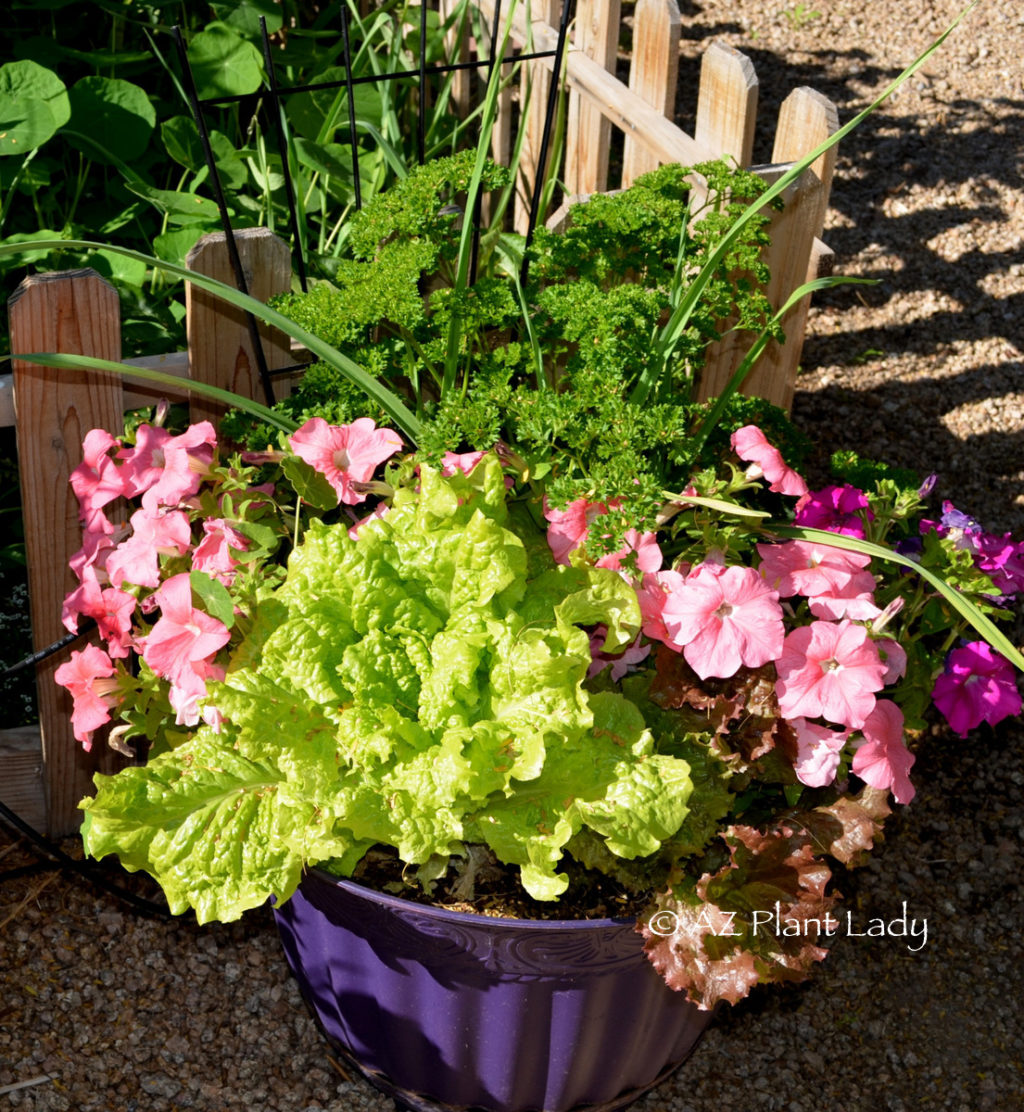
Garlic, leaf lettuce, spinach, parsley, and petunias
Flowers look great when planted with vegetables, and I always include some. Nasturtiums are easy to grow from seed, and their leaves and flowers are edible. Petunias (and nasturtiums) are great companion plants for vegetables because they help to control damaging insects from eating your vegetables.
Do you want to grow vegetables in containers?
Here is more information on how to do it…
“Vegetable and Flower Containers”
I hope you try growing vegetables in containers as much as I do!


